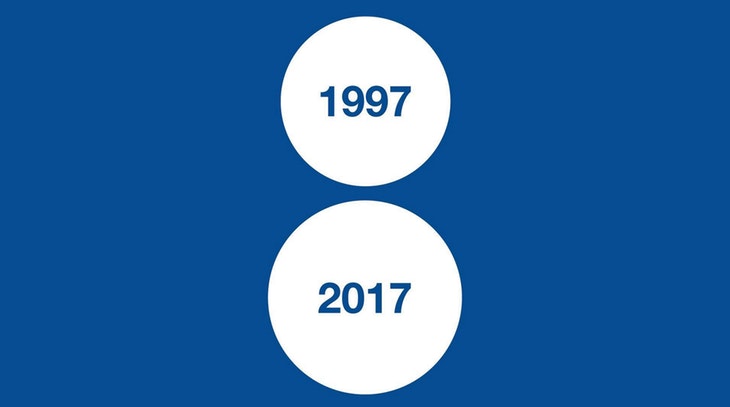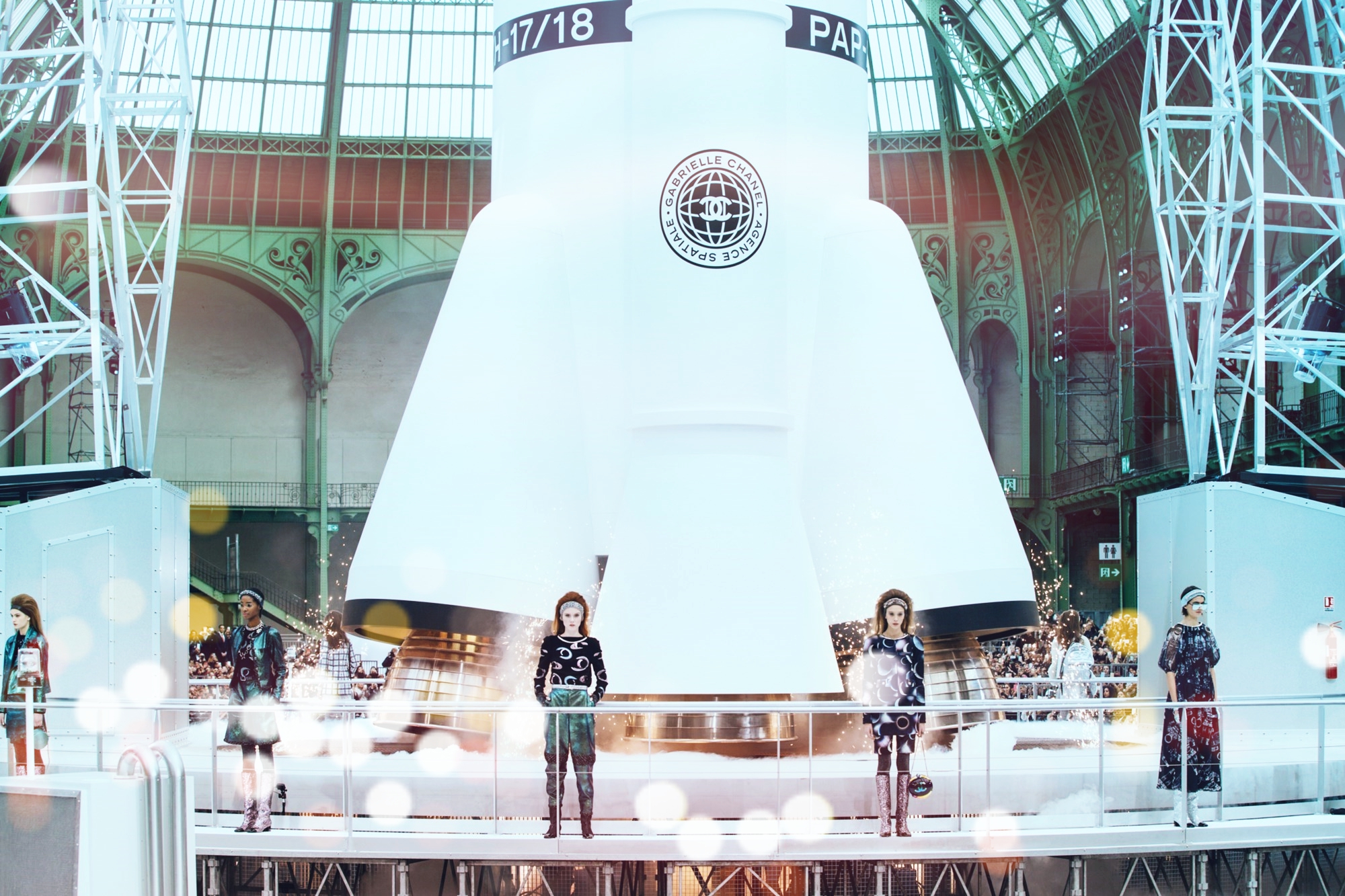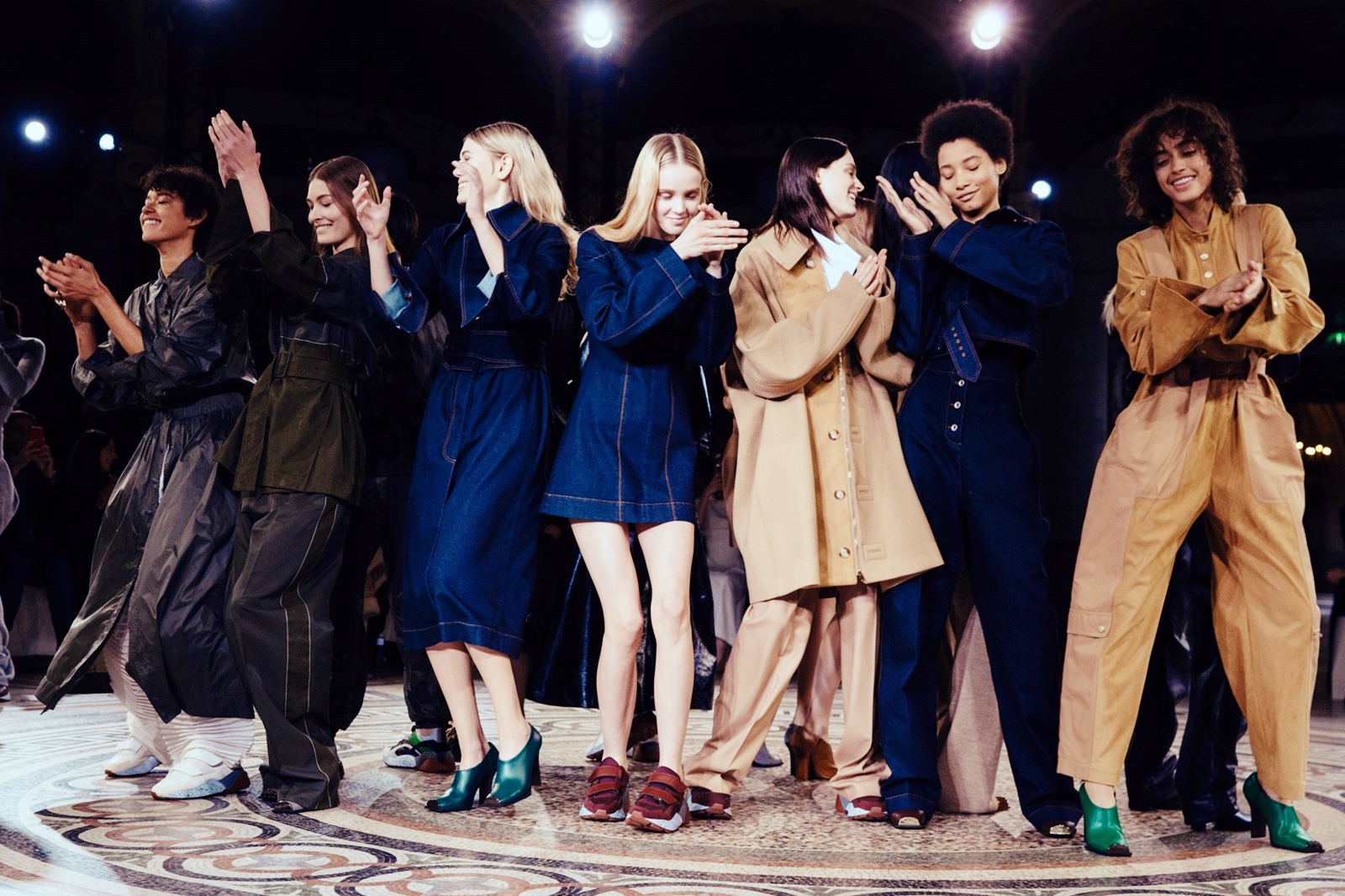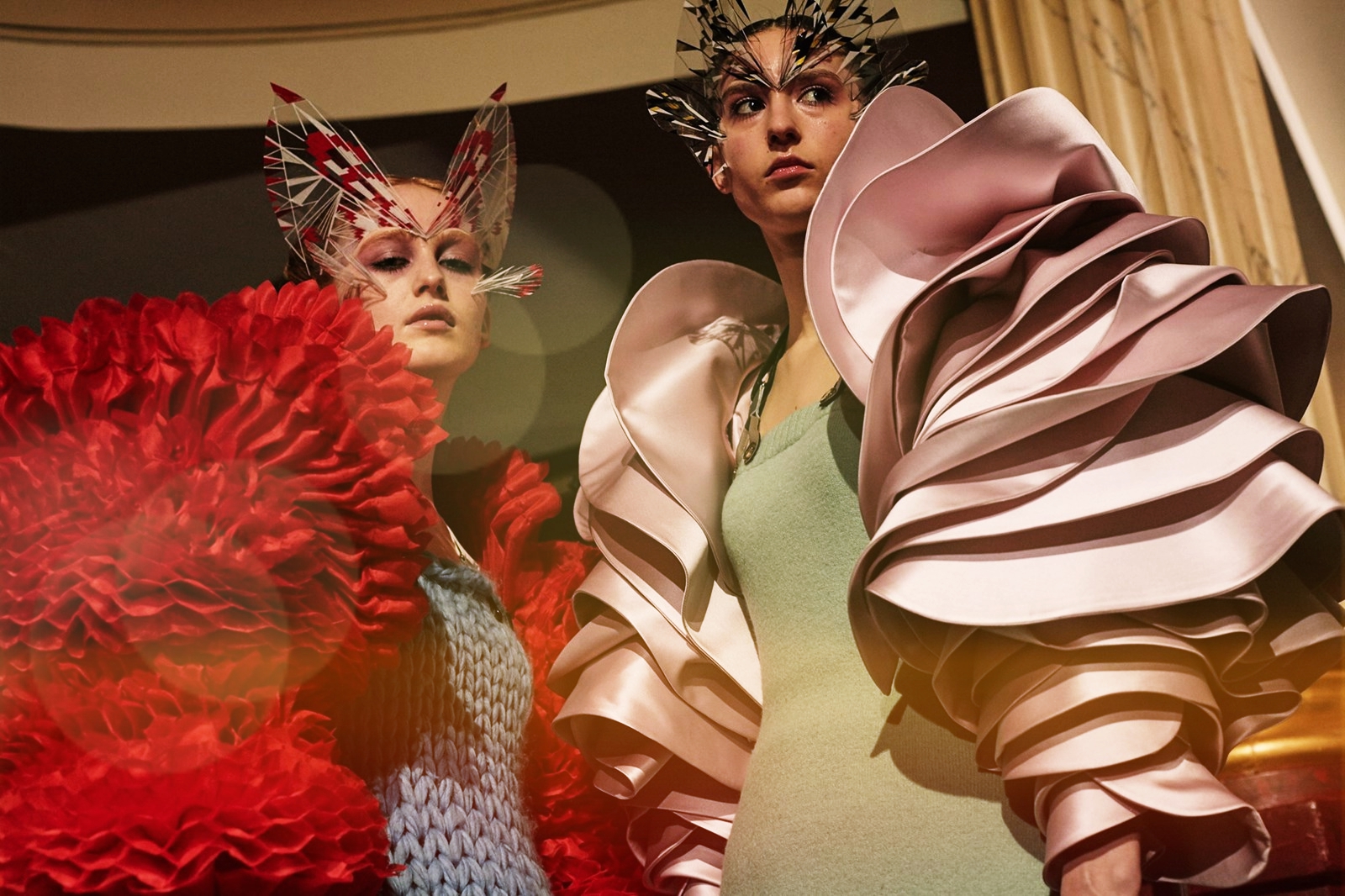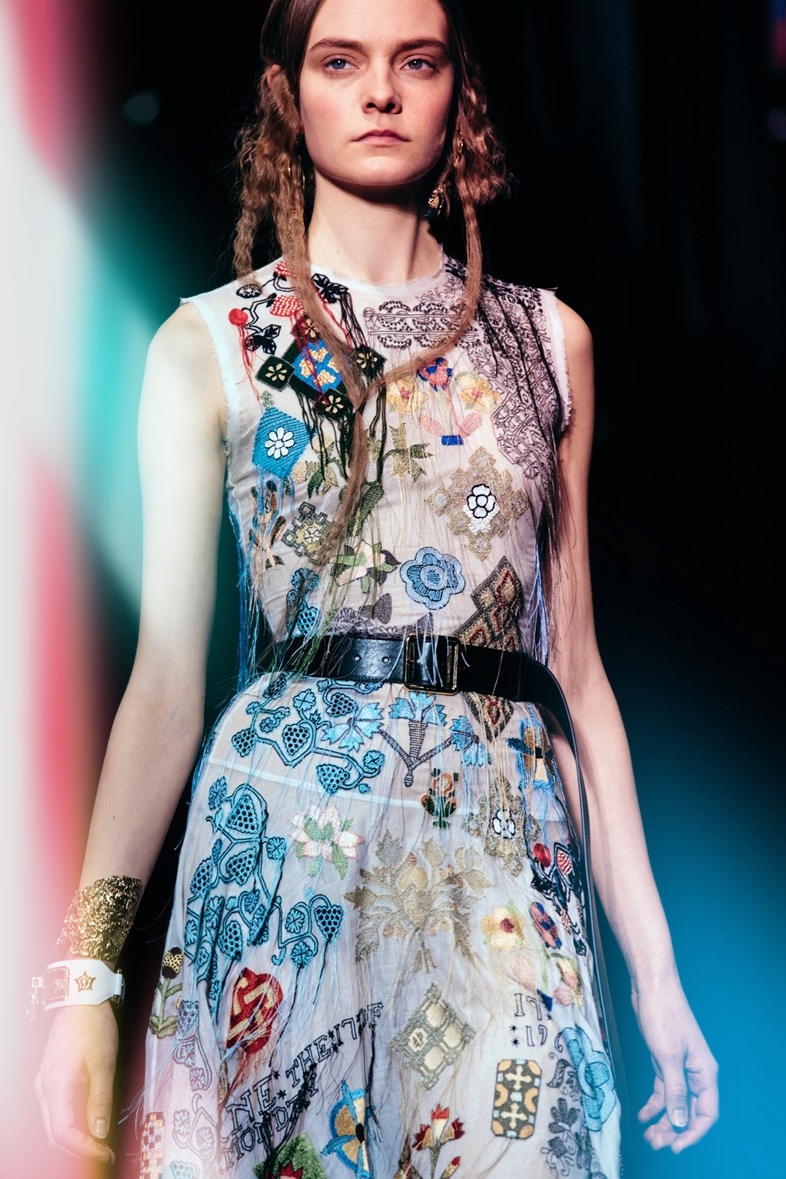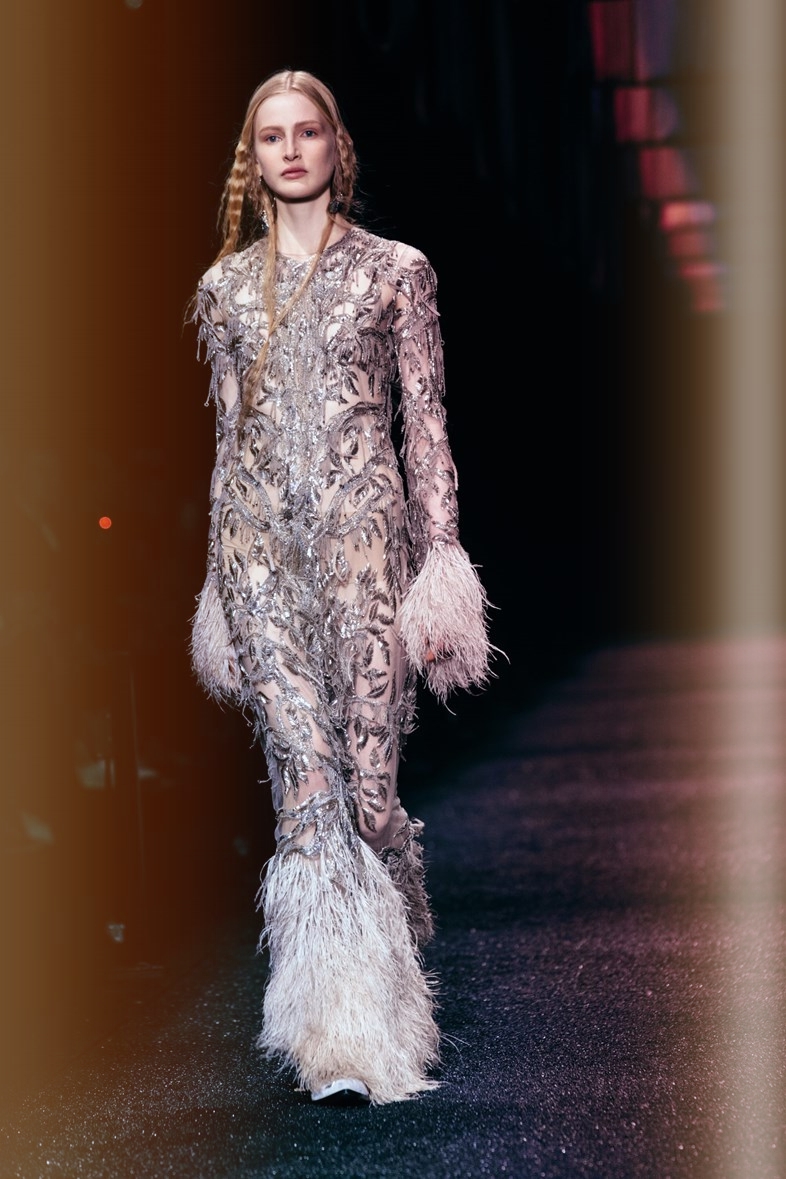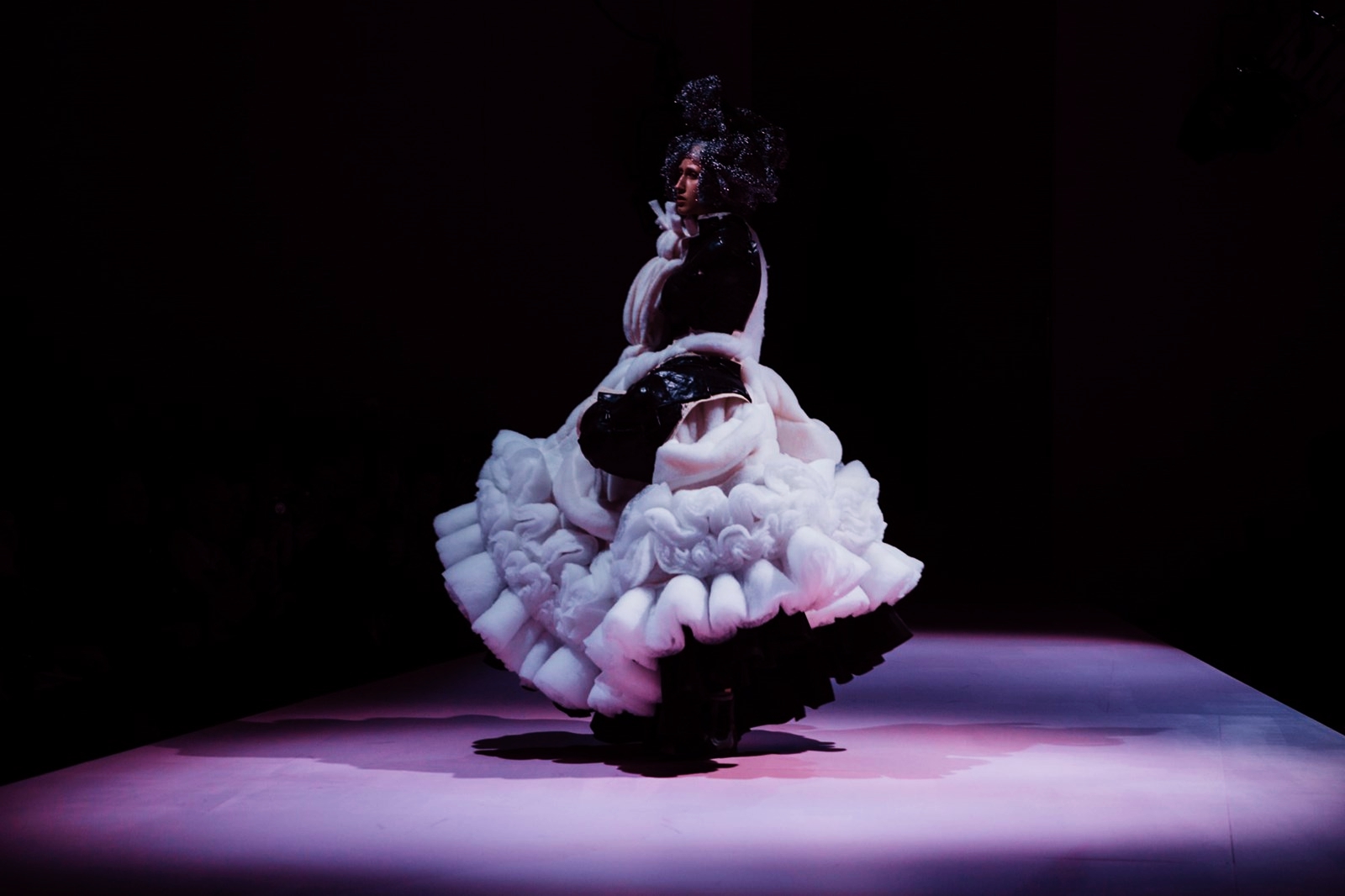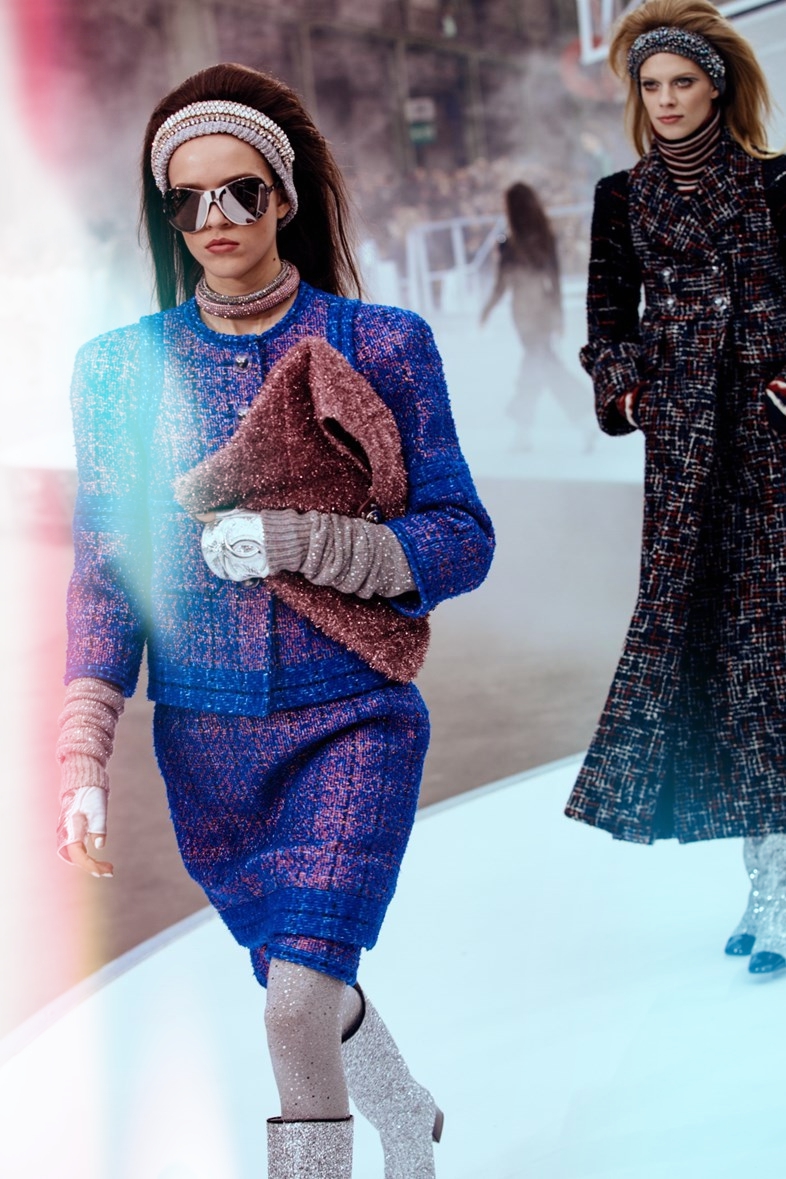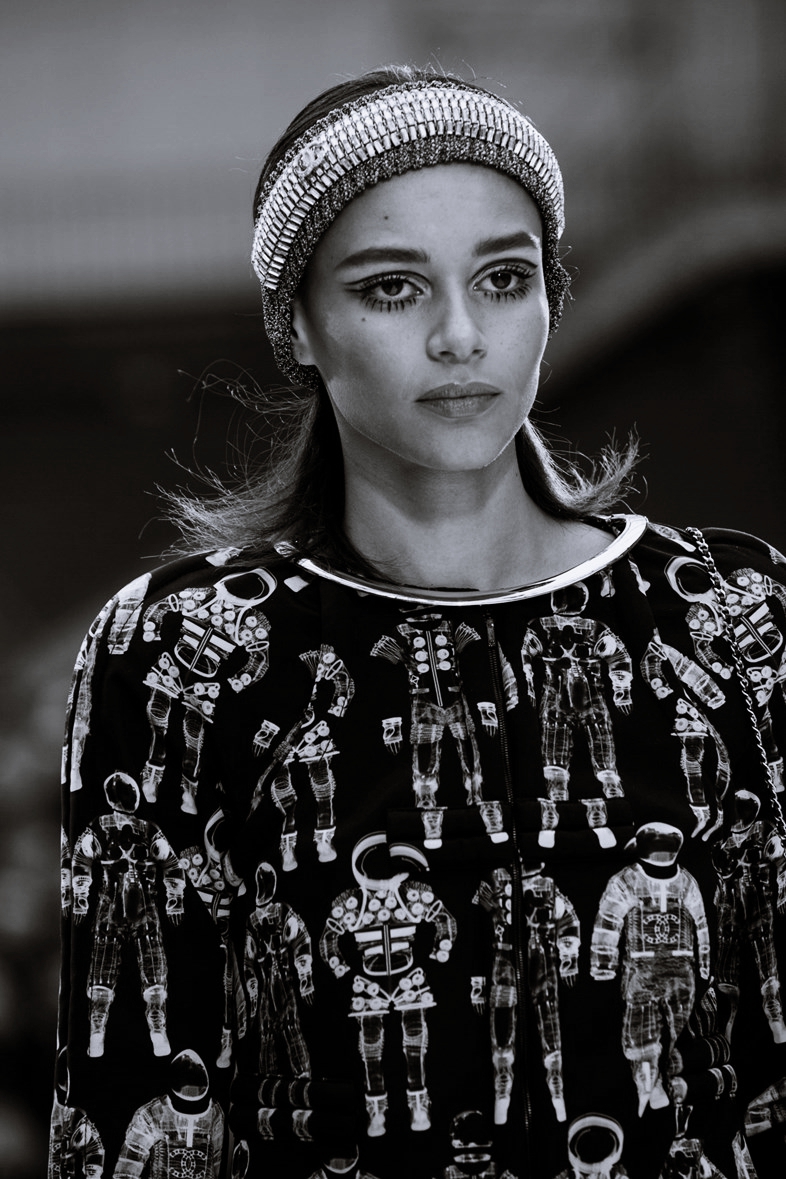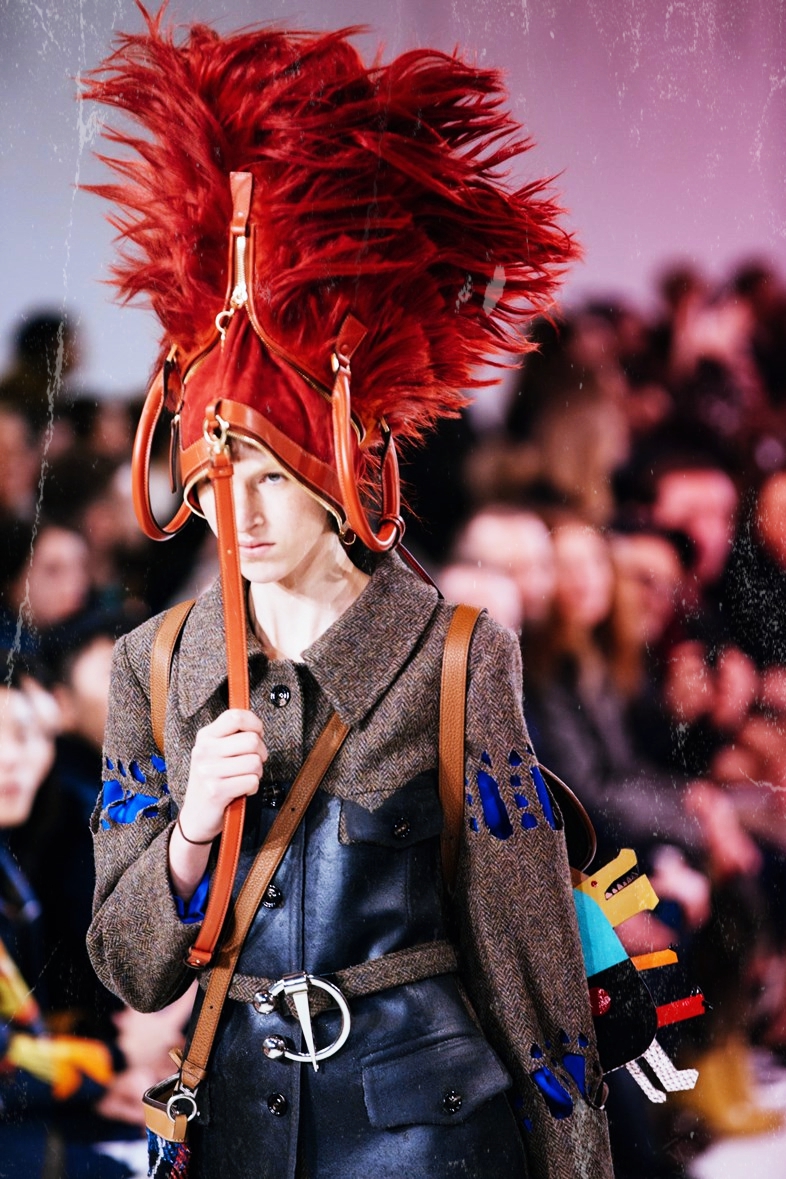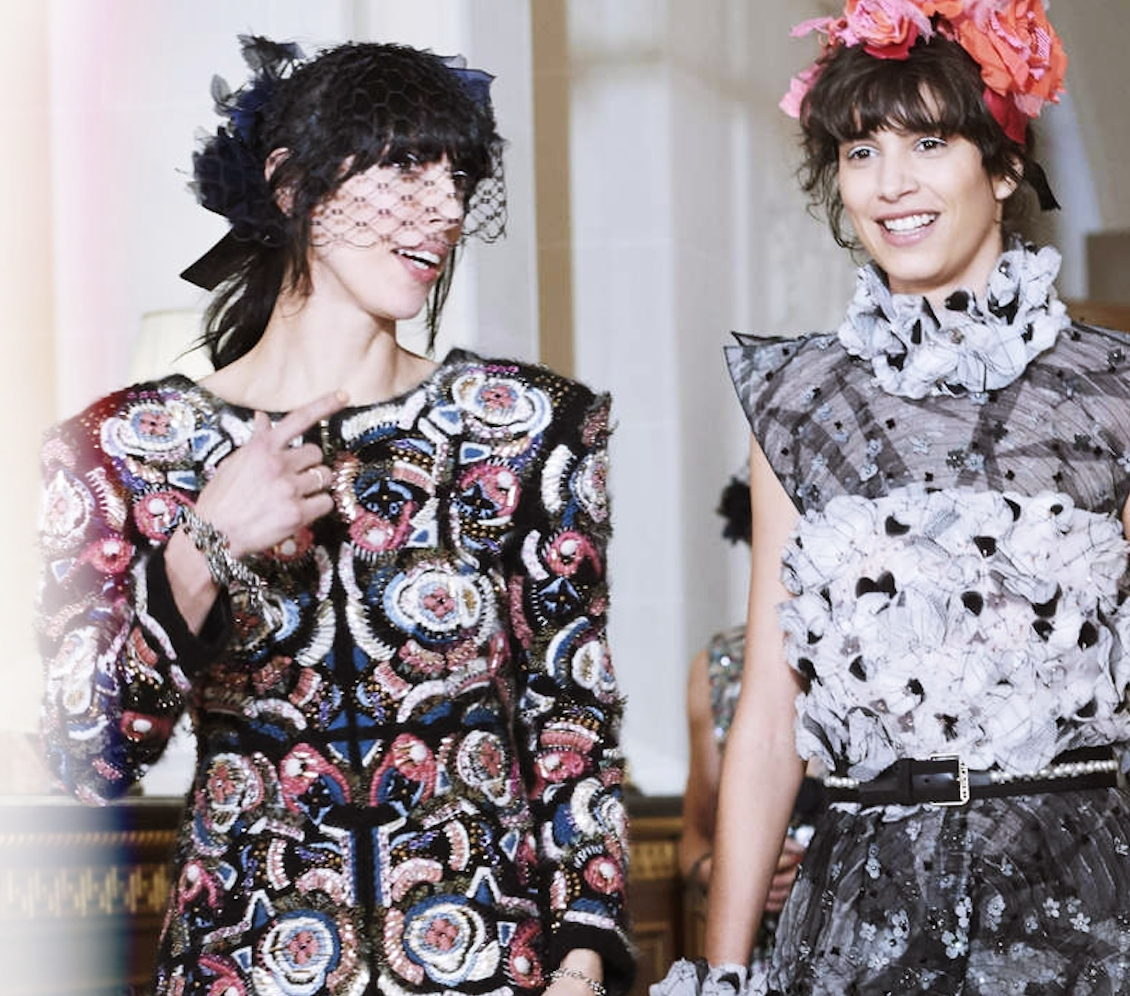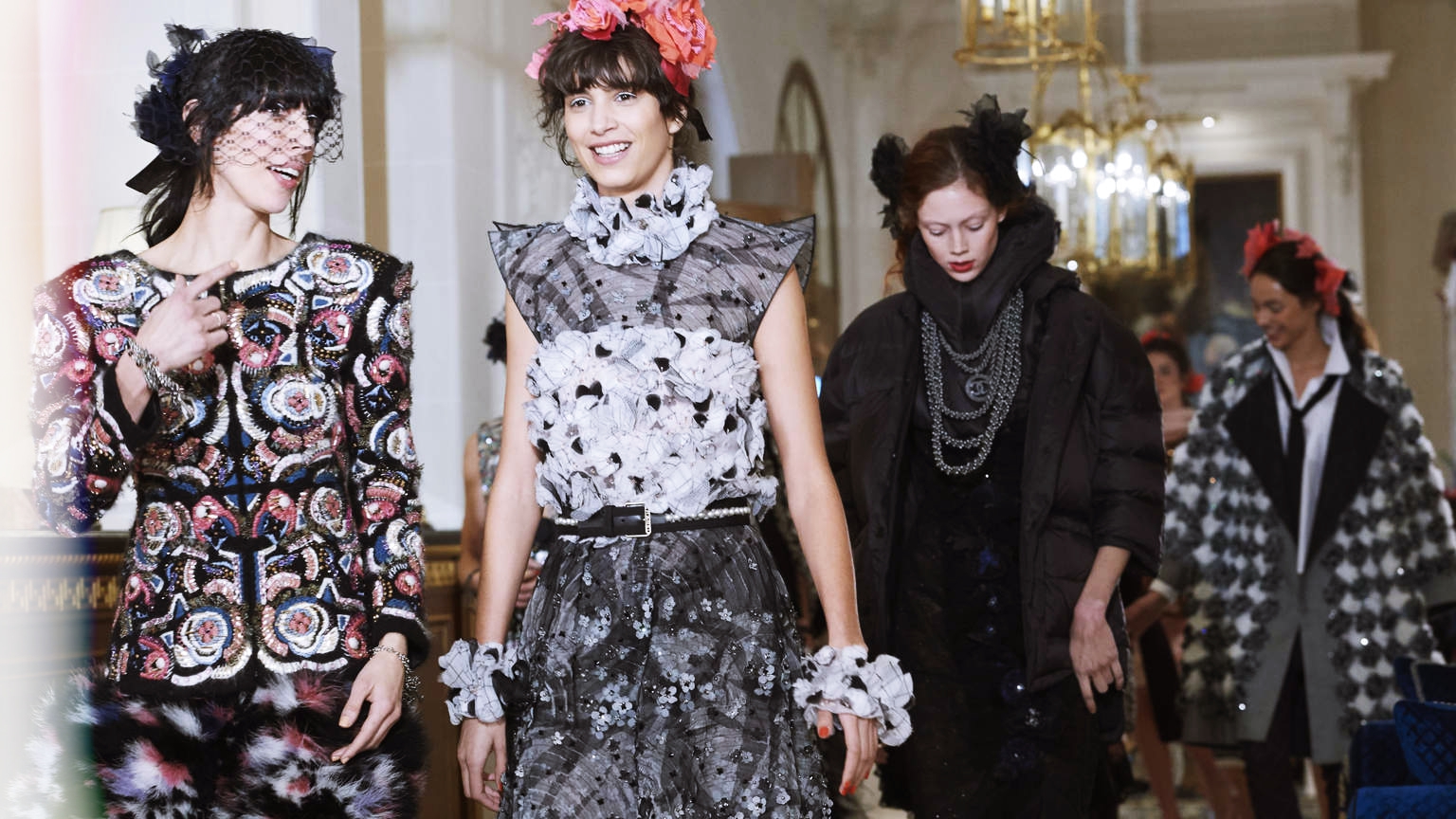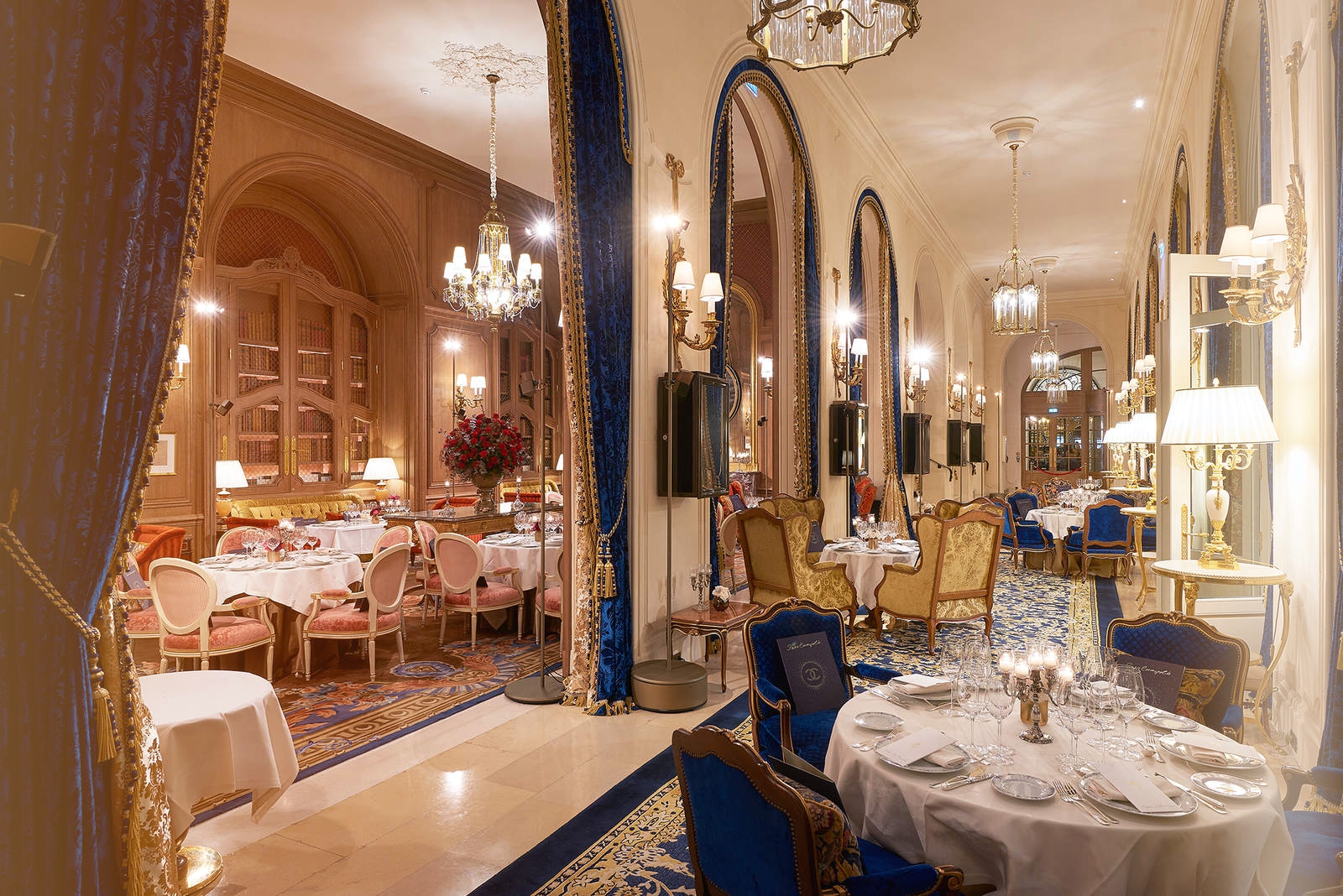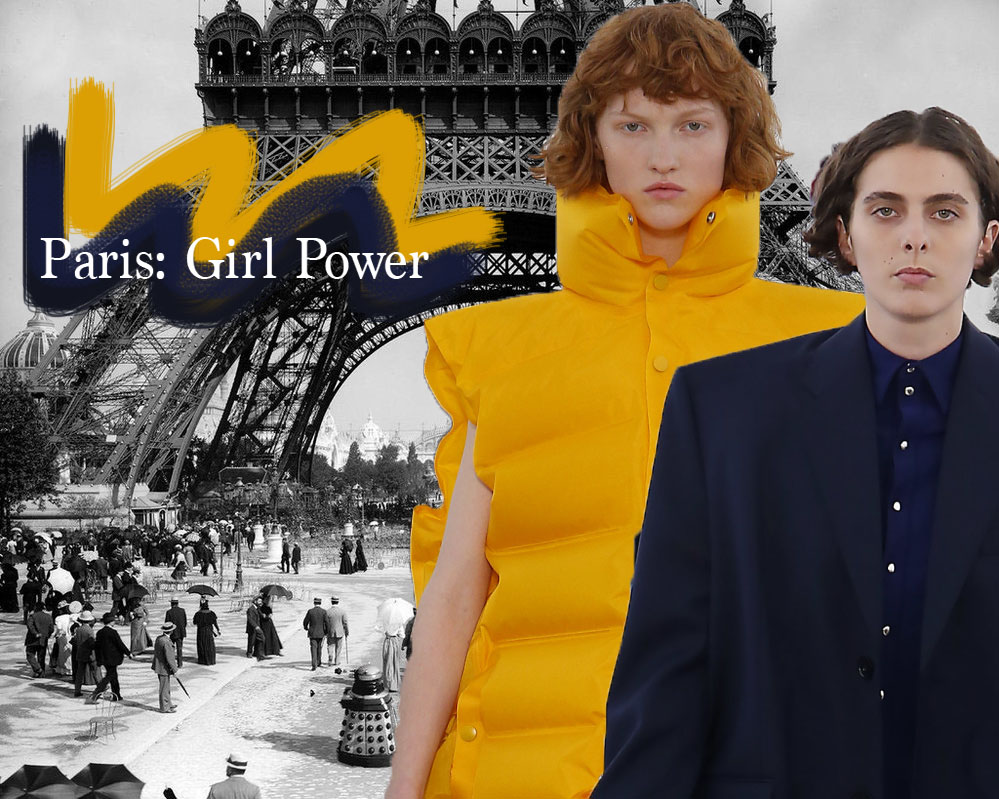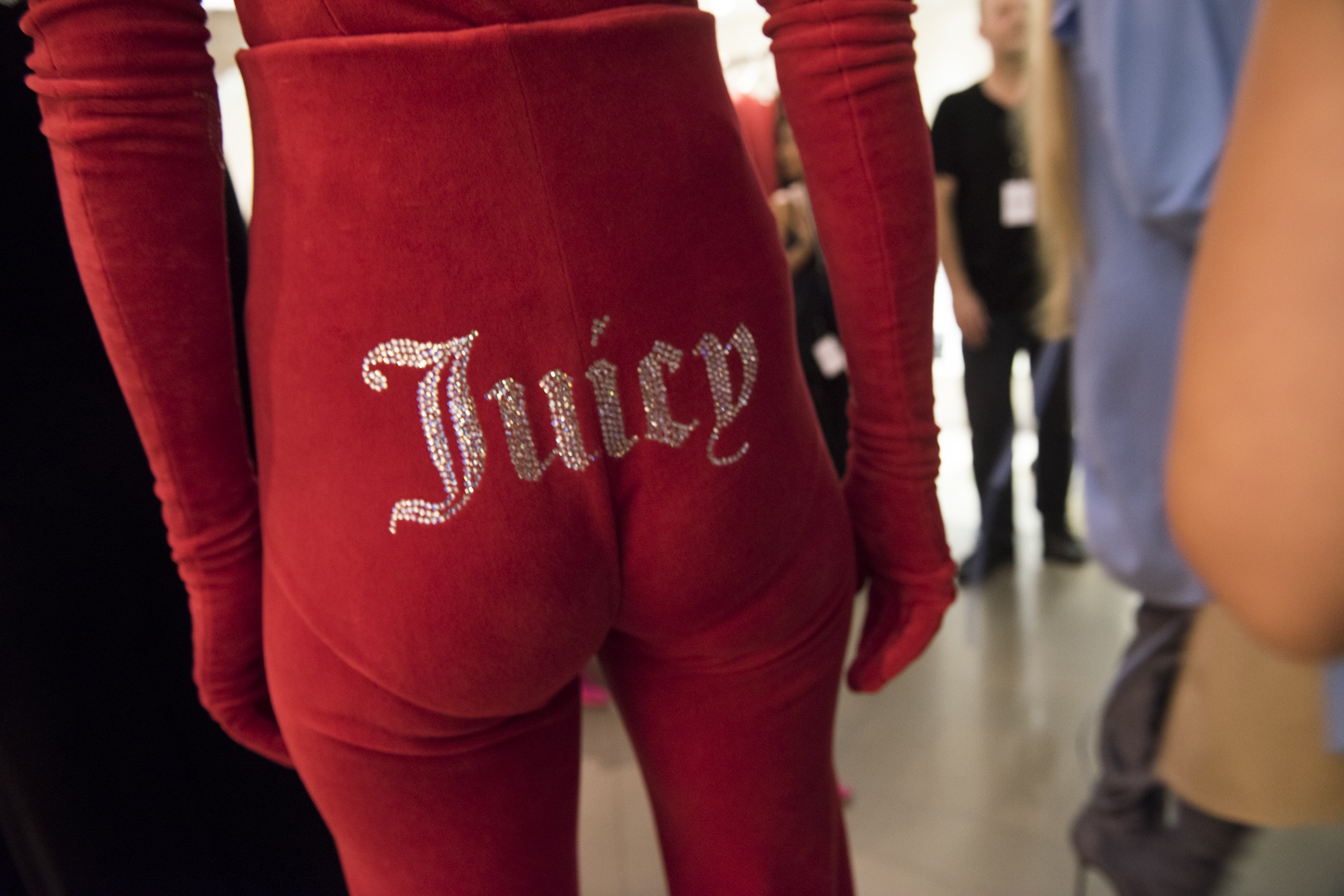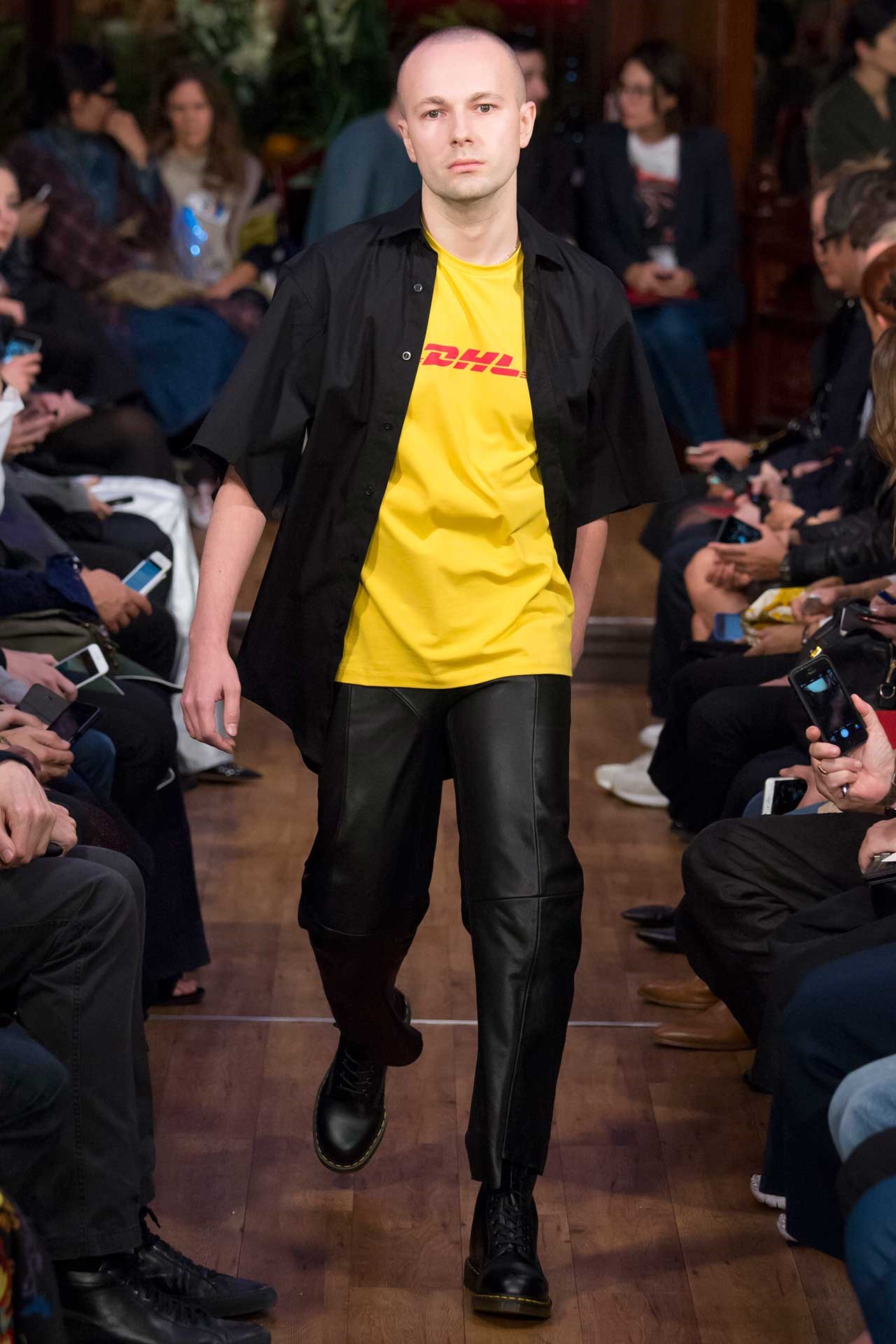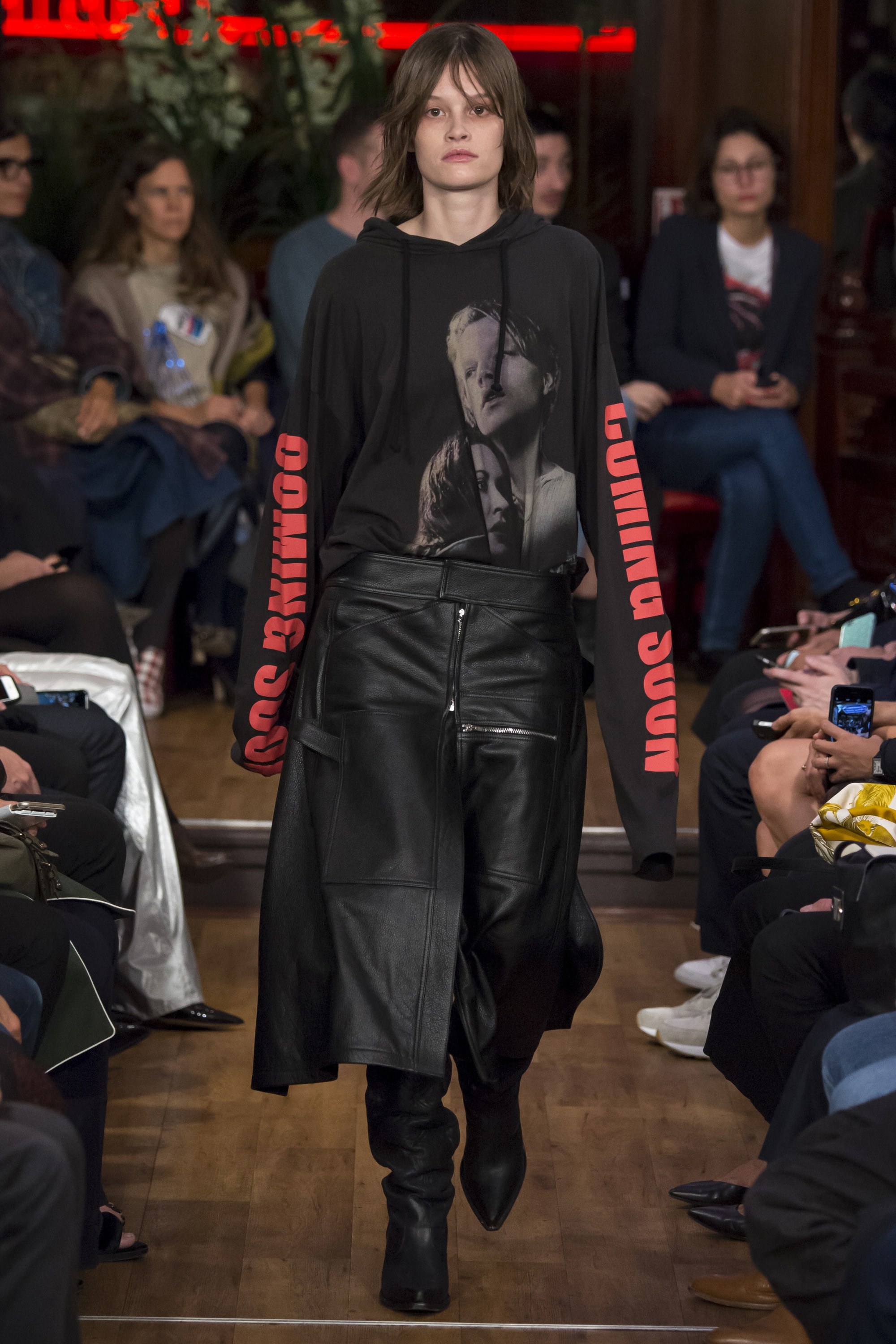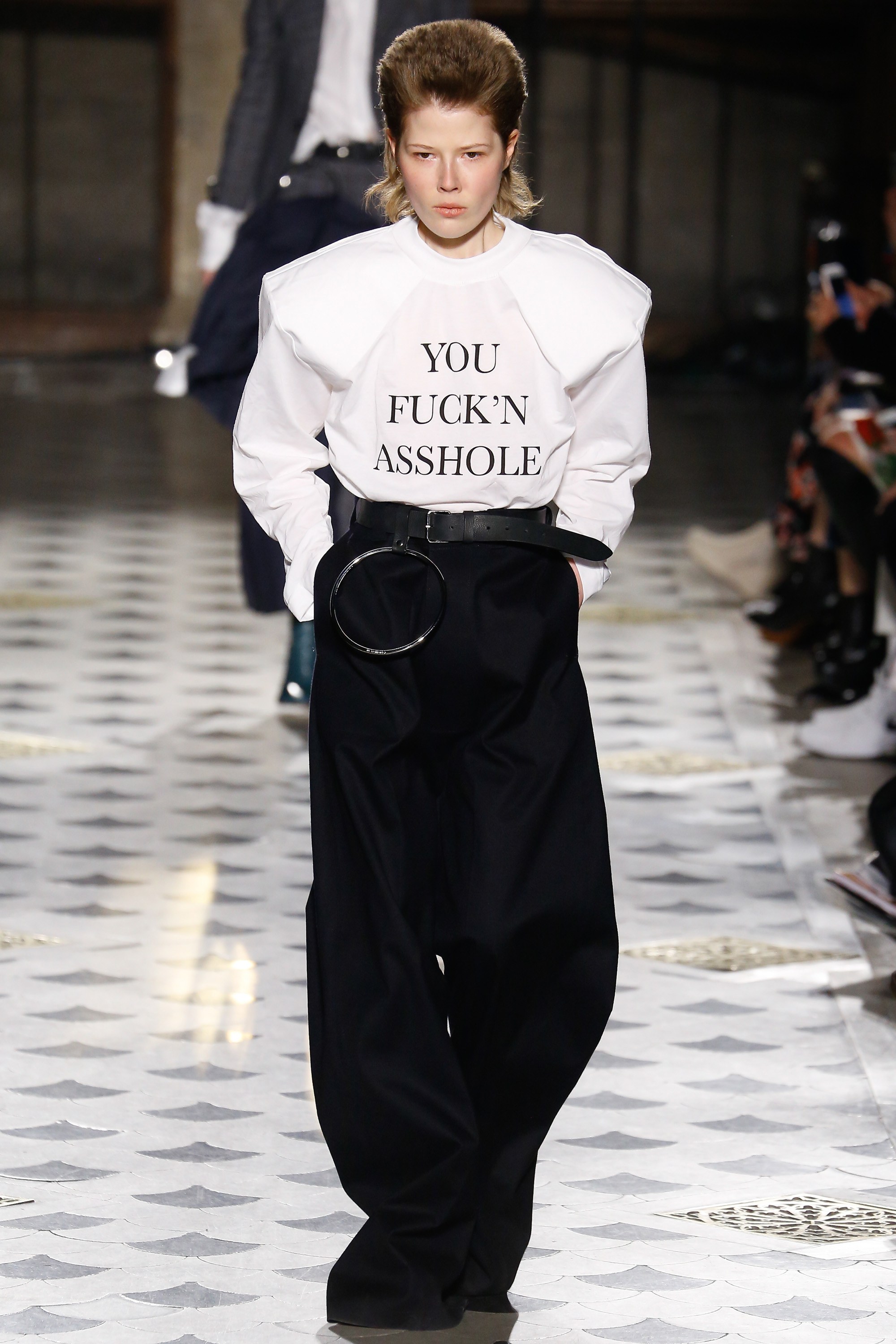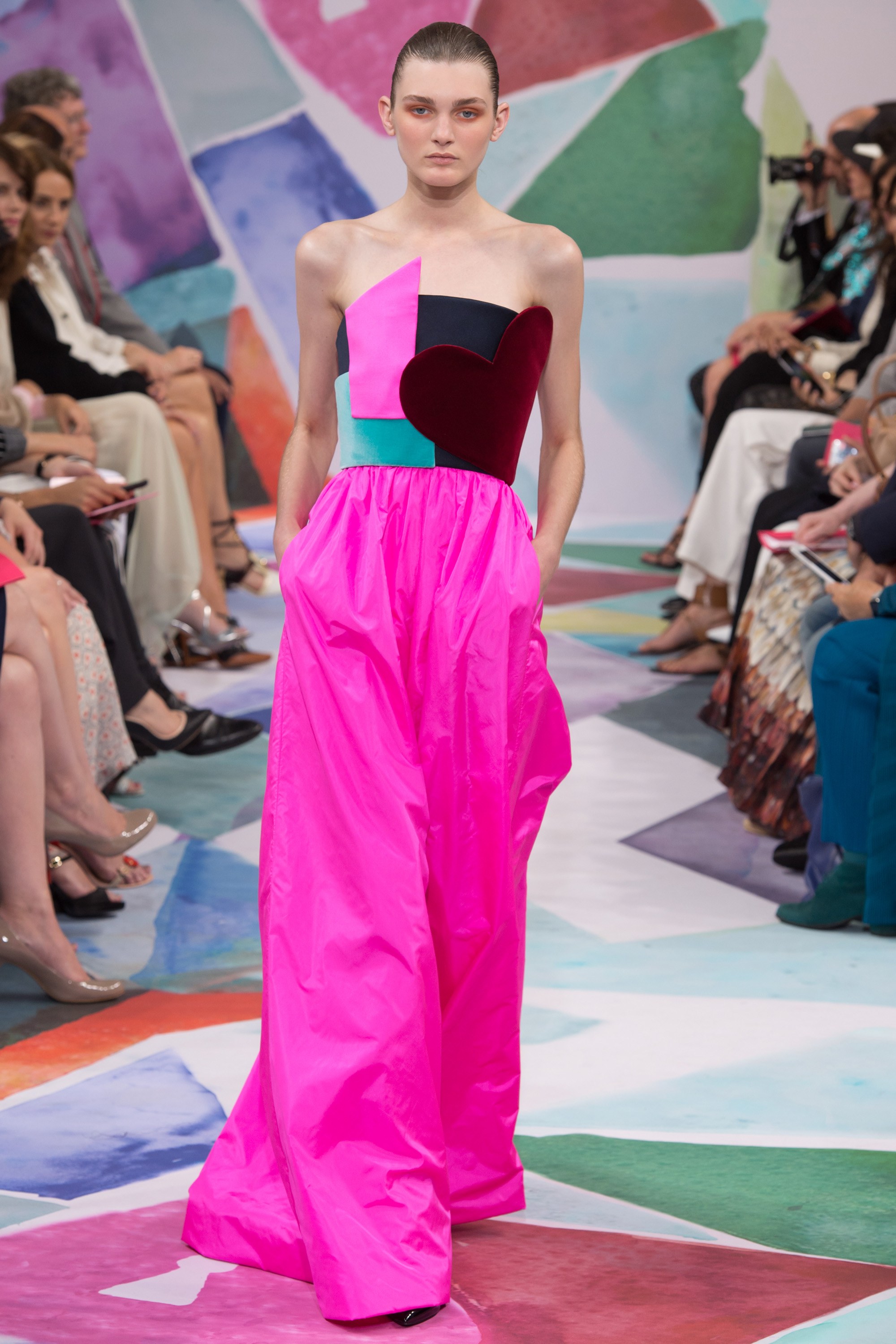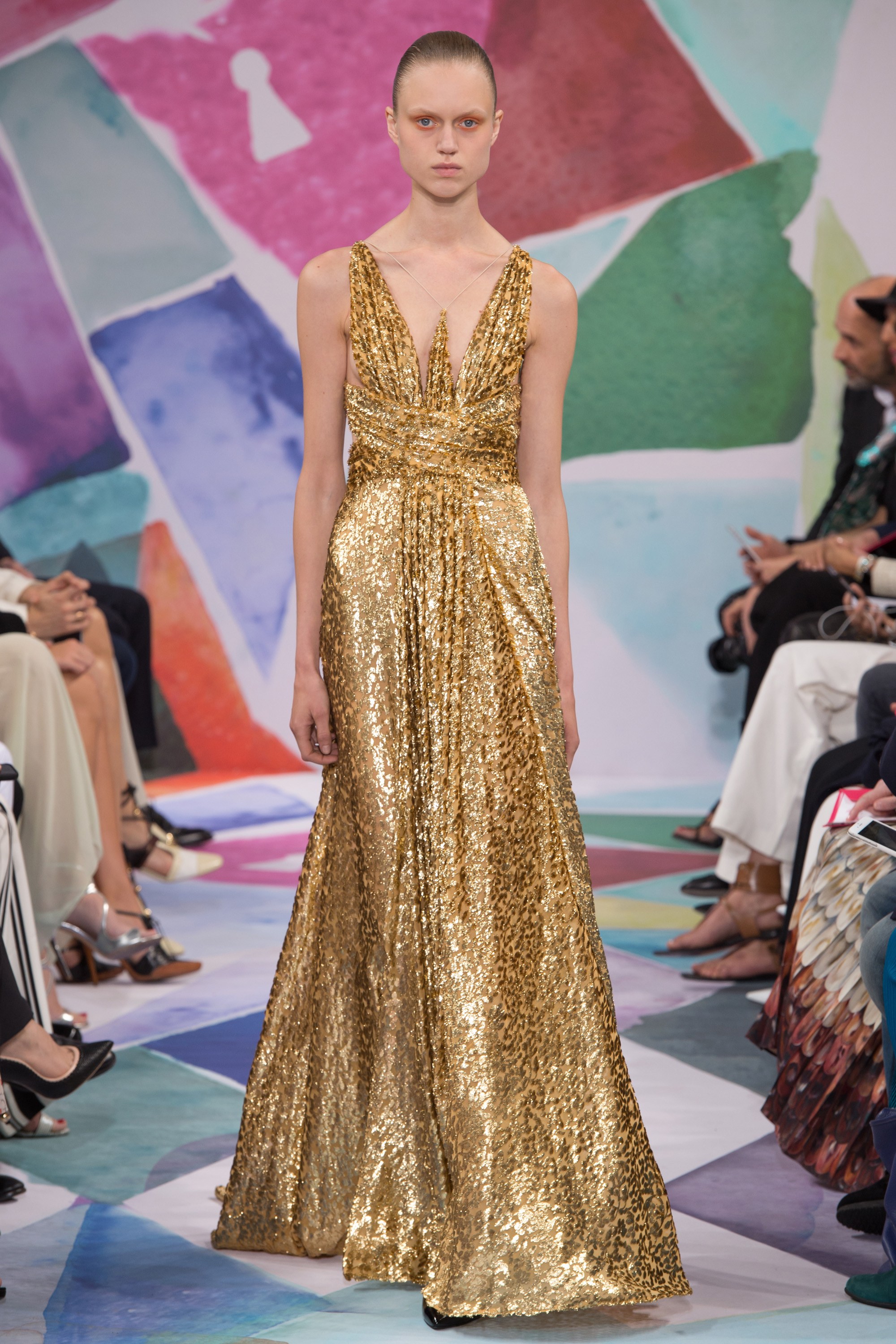In a word, the Spring 2019 Paris collections were reflective; serving no shortage of food for thought to the table. Whereas last season shouted for a call to action, proactively taking charge in empowering those with unheard voices (e.g the applauded Undercover collection which featured politically engaged high school teens), this season took a more reactive stance in light of current events. Designers responded to today’s political challenges in an, albeit quieter, more intense approach. Notably, Rick Owens erected a lit pyre in the centre of the Palais de Tokyo where condemned witches were burned at the stake; an (in)direct MeToo collection featuring torch-bearing models who wore deconstructed denims and apocalyptic silk fringed mini skirts. The stripes of a charred American flag were also featured on various tops and a floor length billowing gown.Rei Kawakubo also unveiled a deeply emotional presentation at Comme Des Garçons which spoke to the “beneath the surface” psychological challenges females face; whether those be doubts of not being good/pretty/smart enough, pressures of a ticking clock, limitations of anatomy, compromising being a boss (at the risk of sounding too “bossy”), the choice of career versus carer.
This was translated through the raw padded bellies poking out from sliced open, glistening black suits- a reference to Kawakubo birthing not children, but instead a multi-million dollar empire. Chains also constricted the body underneath logo-printed second skin dresses. The chains continued to dangle from limp sleeves and past the hem, dragging onto snow white sneakers. Did she escape from her prison? Or are the chains the metaphorical constrictions a woman must deal with? While reflecting on her own journey, the collection resonated with many women whose hidden, heavy shackles are now seeing the light.Another example of a collection stepping back hitting a reflective tone was Christian Dior. Opposed to last season which was inspired by the student protests of 1968, this season Maria Grazia Chiuri focused on the art of ballet. The collection was painted by a whisper of muted colour - nudes, blush, dusty rose- and was poetic simplicity. Focus was placed on the quiet beauty of the human body and its natural curves. The uncomplicated aesthetic allows the wearer to place attention on herself and bask in a moment of tranquility. In a world of too much noise - is it not refreshing to simplify?
The hushed tones of the pieces however failed to leave a major impact due to the theatrical presentation which was accompanied by a conceptual dance piece, choreographed by Sharon Eyal. Eyal and the eight dancers delighted, but similar to the previous Dior Resort collection featuring horse riding escaramuzas, the theatrics of the fashion show outshone the clothing. It was almost that the models were getting in the way of the performance.The theatrics at Balenciaga also risked eclipsing the collection. The show blew all experience marketing endeavours to shreds as 2000 square meters of video screens aligned a digital tunnel. Here models walked on projections of psychedelic colour constellations. Fluid, neon hypnotic shapes melted into one another through a collaboration with Montreal-based artist Jon Rafman. The gargantuan show provided the setting for an equally gargantuan collection. Creative Director Demna Gsvalia, who is credited for logo mania hype and sock shoes proved his expertise in draping and innovative tailoring which would even make the maison’s founder proud. Gsvalia aspires to bring back structured elegance to the street through “neo-tailoring”. Through his technique, suits are ripened with oversized shoulders. 80s revival? NO! Here, is a fresh futuristic silhouette launched for the future.
Other fashion titans also continued to up the ante when it comes to show production. Chanel took us to the beach (well a beach was transported within the Grand Palais; sand, waves and all), Saint Laurent presenting on top a shallow water-covered runway under the lights of the Eiffel Tower, and Gucci opting out of Milan to show in Paris at the legendary nightclub Le Palace. Even with a spectacular location and the legendary Jane Birkin singing “Baby alone in Babylon”, the dazzling bells and whistles didn’t distract from the question of haven’t we seen all of this magpie geek chic glory before? Alessandro Michele is a visionary and since 2015 has successfully revived Gucci as one of the world’s leading fashion brands - it will be exciting to see him continue to push his boundaries further.However, maybe contemporary design is about developing a singular language and relentlessly sticking to those codes.
Through thick and thin - through Dior Homme, Saint Laurent and now… Celine (Céline).Of course I am referring to the polarising Hedi Slimane, who continues to be the talk of the town, having launched his first collection as Creative Director for Celine. Slimane obliterated the once go-to brand for professional executive women, completely replacing it with his already tried and tested designs of black suits and micro-mini skirts, popularised in the early 2000s. It is unfortunate (?) presenting in the shadow of the Kavanaugh hearings but the full removal of previous creative director Phoebe Philo’s established working-woman codes reads troublesome. Not to mention these codes are now substituted by dazed youth, debauchery, drugs, sex, and rock and roll ect…Knots in our stomachs were also felt at Thom Browne who, although celebrated in blending the beautiful and the terrifying, sent models down the runway wearing Friday the 13th–style face masks, juxtaposing the couture-worthy gowns. It was not the masks which spooked. It was the fact that the models were gagged and bound - arms tightly strapped onto the torso and would thus be unable to brace a fall in sky-high heels. With it being a beach inspired collection, models were surely intended to look as if they’ve been washed ashore in fisherman’s nets, however the perceived message here was tone deaf considering the current climate of silencing women.
Being one year on from Me Too, the question holds - How do women wish to be perceived? There is a place for sexiness (e.g Jacquemus), but generally speaking there is an overwhelming movement towards modest, unfussy, not silly, let’s get down to business clothes. Clothing with a discreet sense of power with no shame in being feminine - a woman’s power suit does not need to be a masculine cut, as demonstrated by Stella McCartney and at Clare Waight Keller’s Givenchy.Despite a strong wave of genderless dressing (e.g Maison Margiela and Louis Vuitton), women don’t need to adopt masculine qualities or dress like a man to break the glass ceiling or be heard. There is power in femininity. The breathtaking beauty of dramatic, voluminous gowns at Valentino. The hypnotic concoction of rich colour, texture and pattern at Dries Van Noten. The protective armour of chain mail laced with Chantilly lace at Paco Rabane.Upon reflection, one of the most apparent trends of the Paris collections was “dressing up” - a reaction to an overly saturated, often sloppy, streetwear aesthetic.
The new season demands sharp tailoring, putting on a tie, and couture-eque details where an effort to “clean up nicely” is respected. We are living in an ugly moment in history - where victims have somehow become villains; where evidence becomes inconvenient; where hard facts are cast away as simply subjective. It’s time for the people - like you and me- to suit up and be the adults in the room, in contrast to the worse than childish characteristics of many so called leaders. Chaotic times call for decency, order and a sense of precision… cue the laser-cut double-breasted Haider Ackermann jacket.
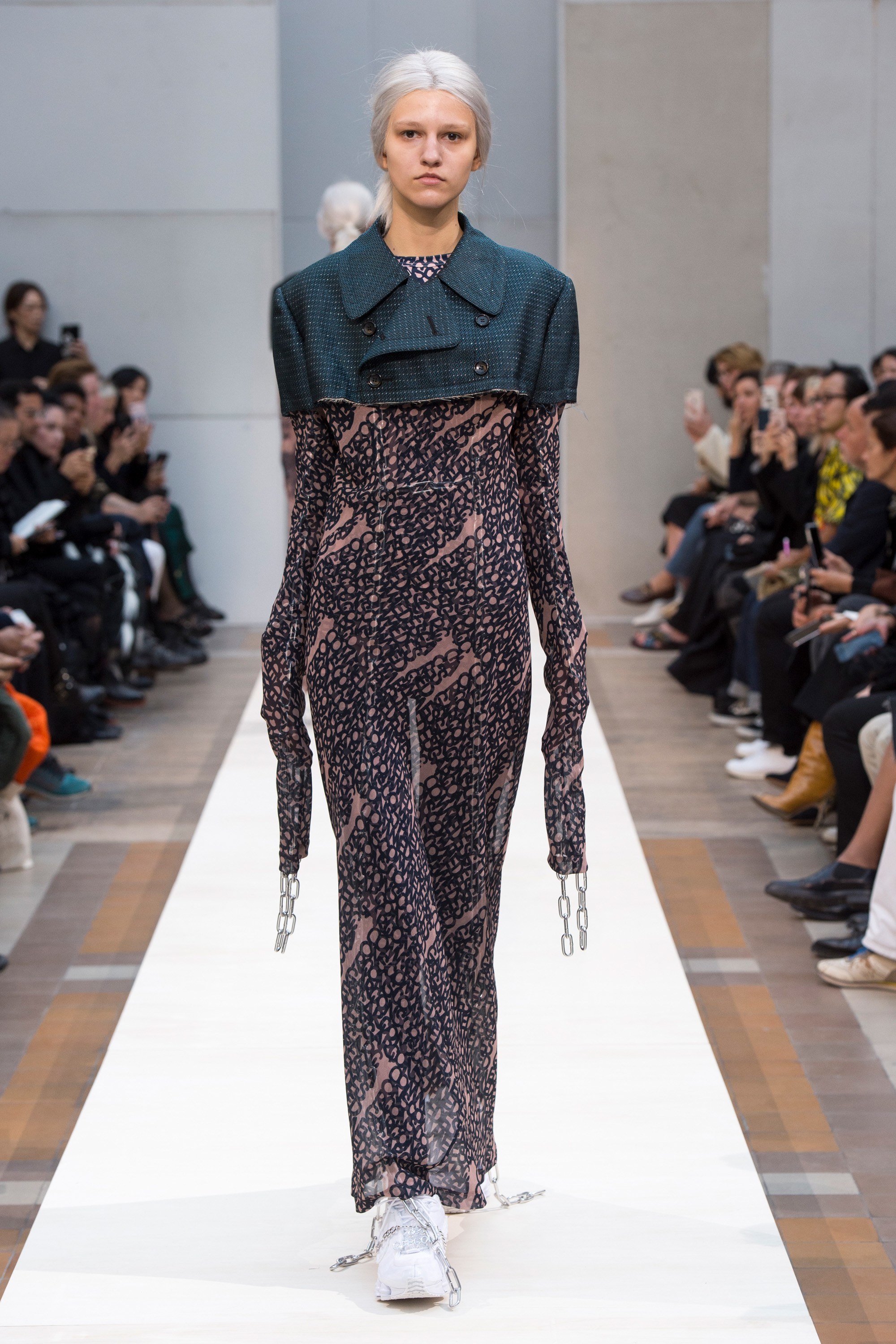
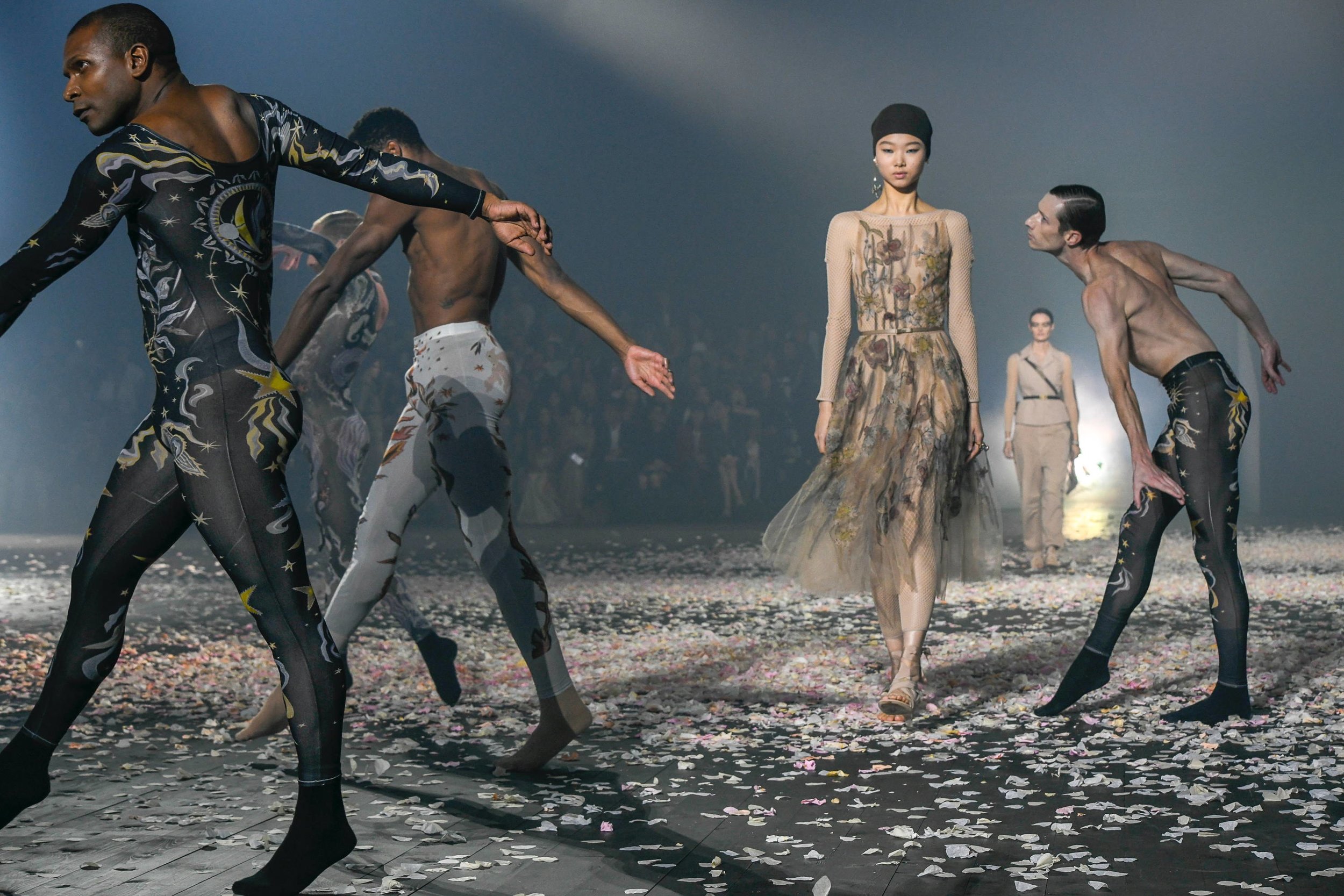
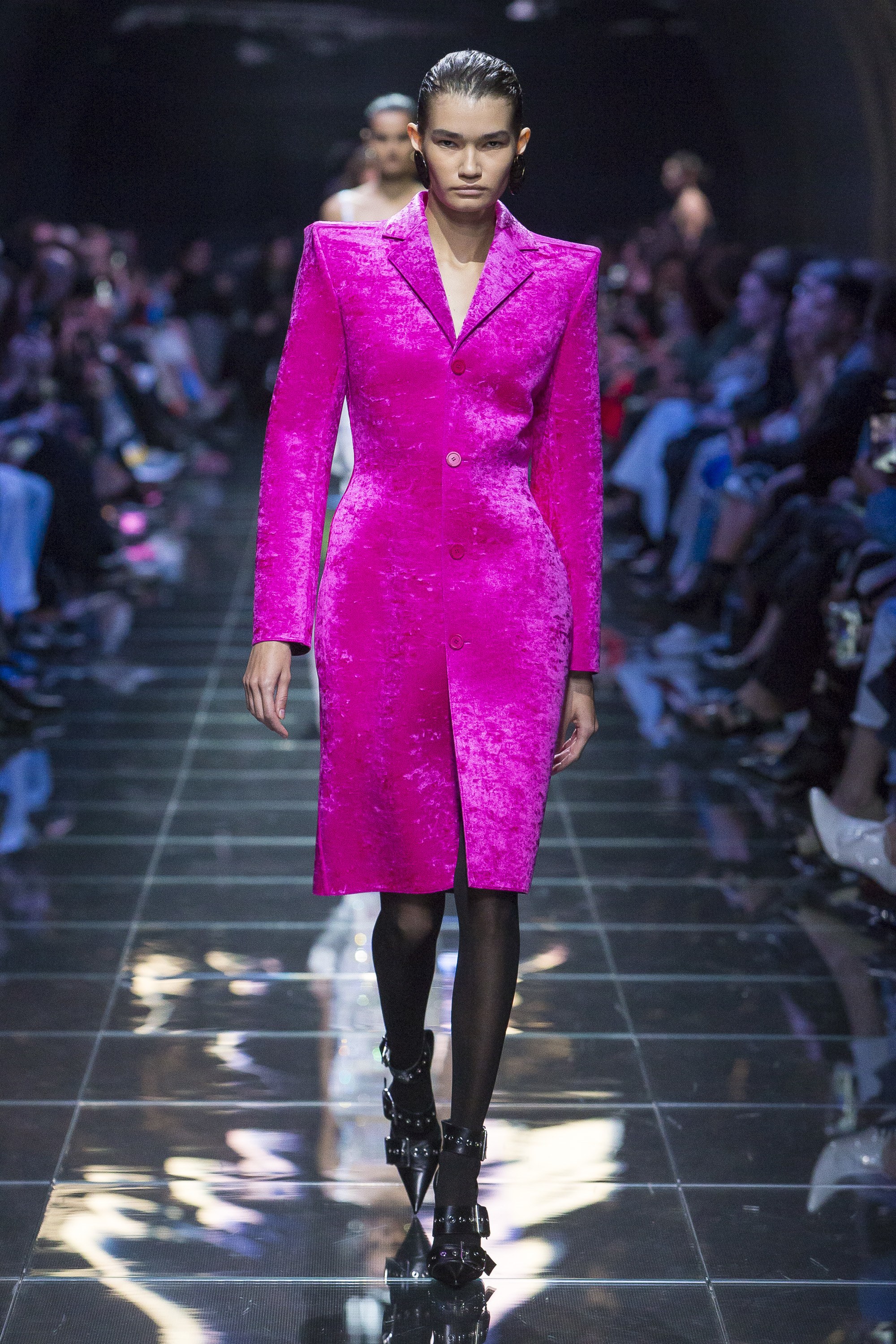
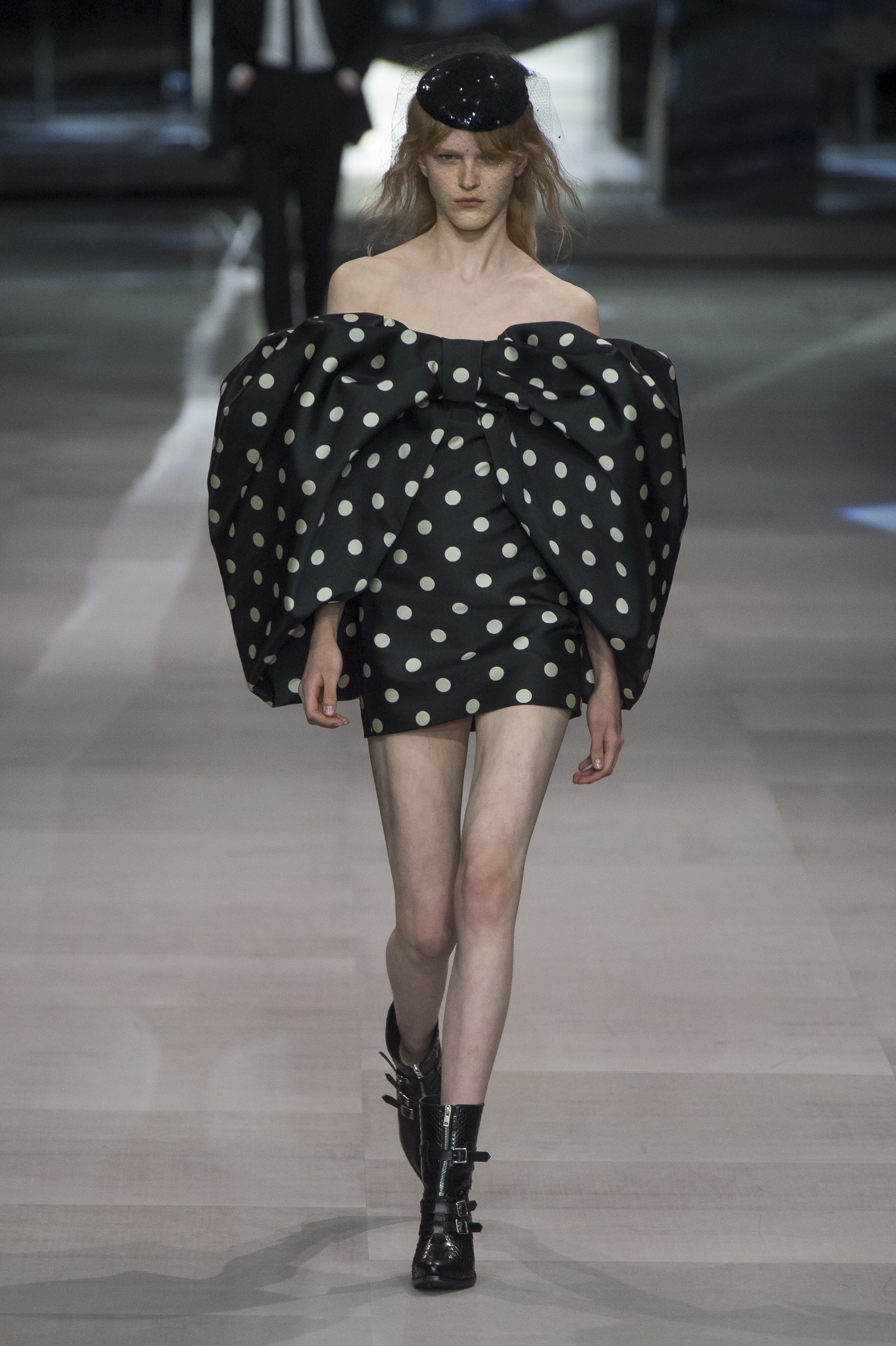

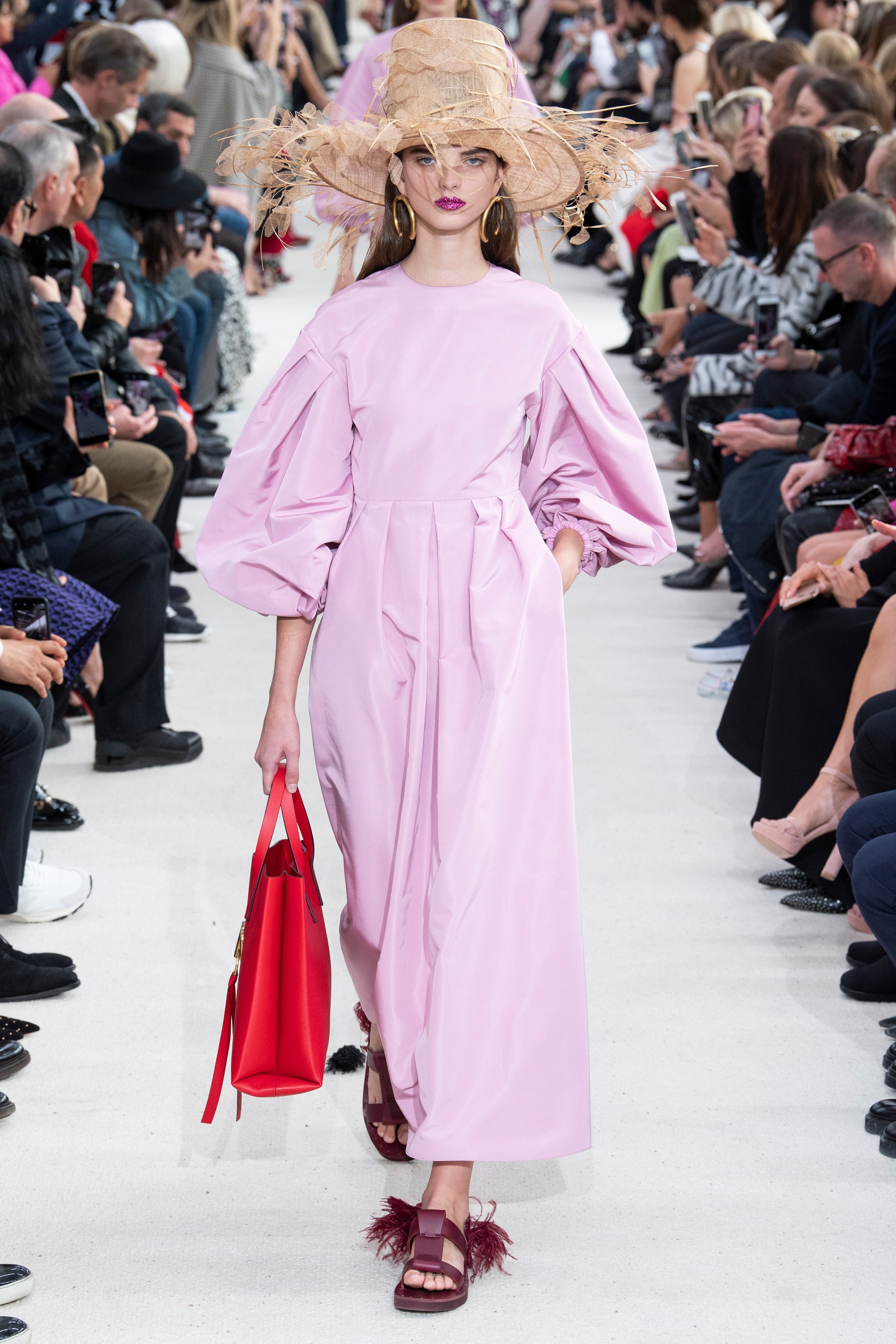
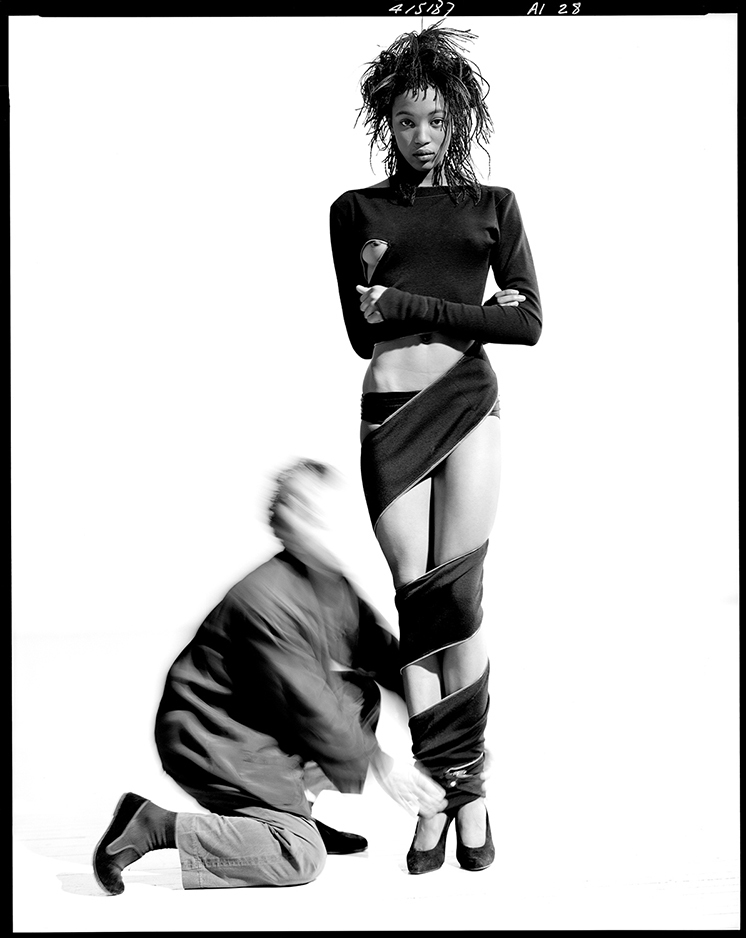

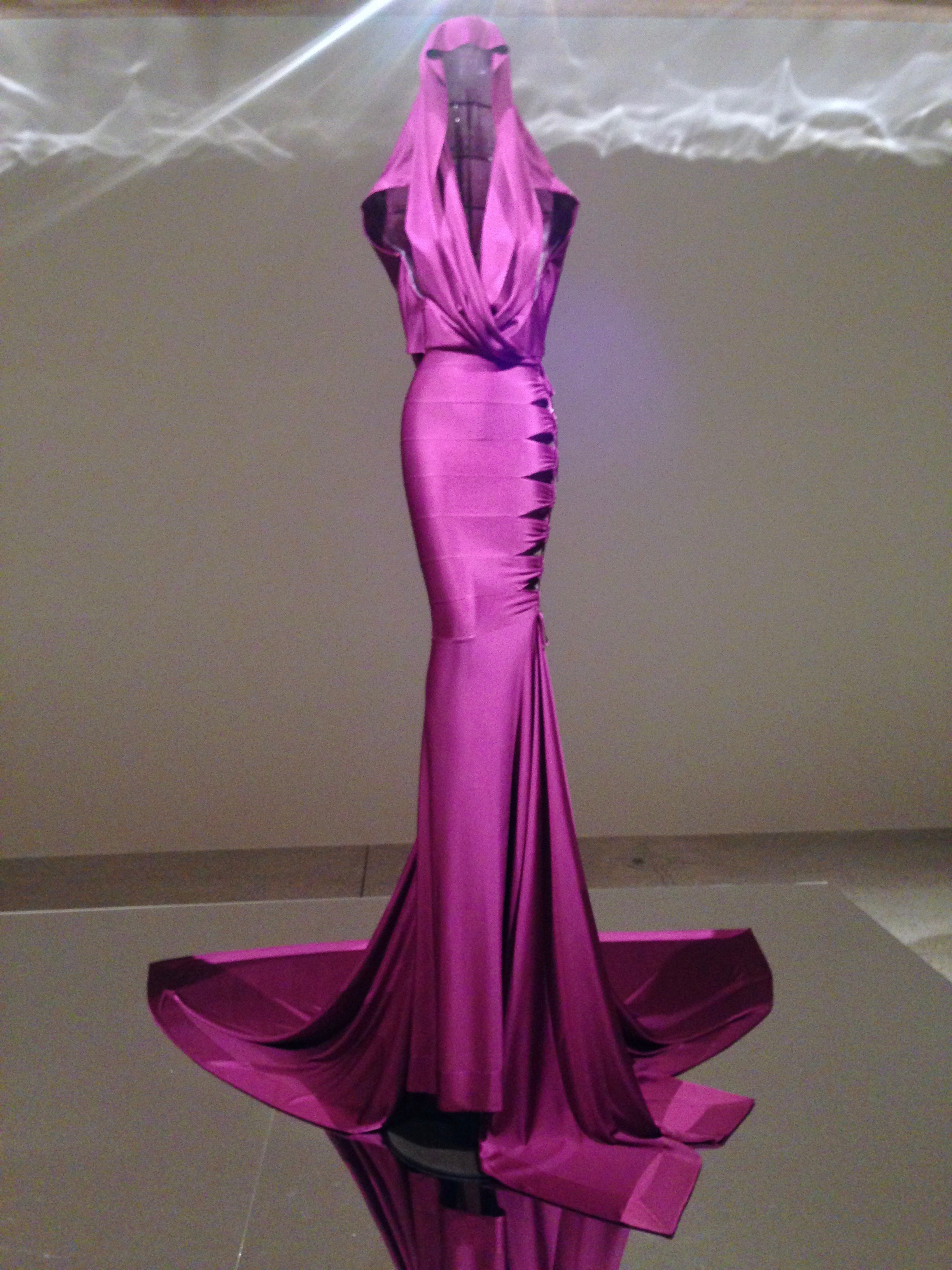
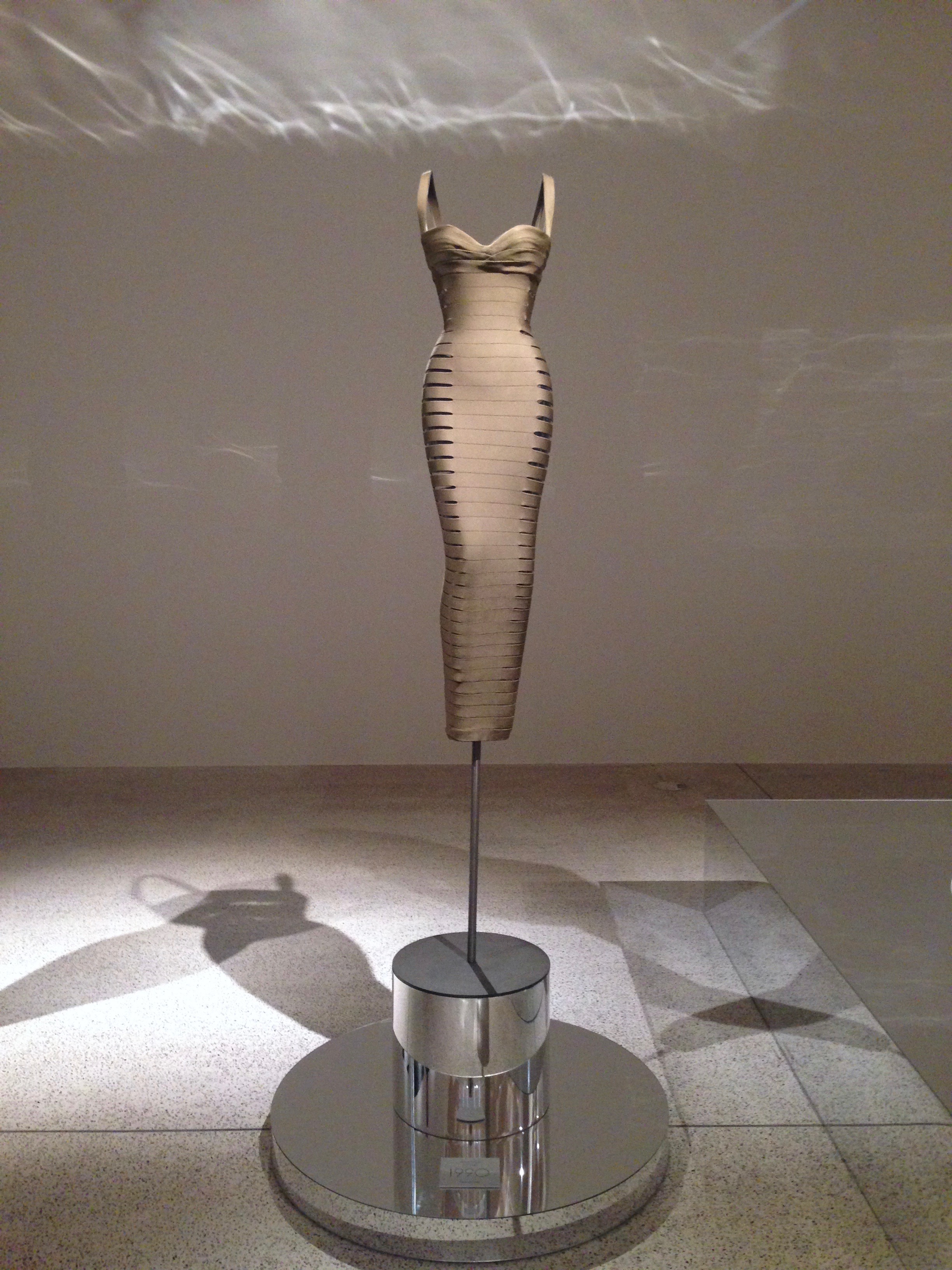
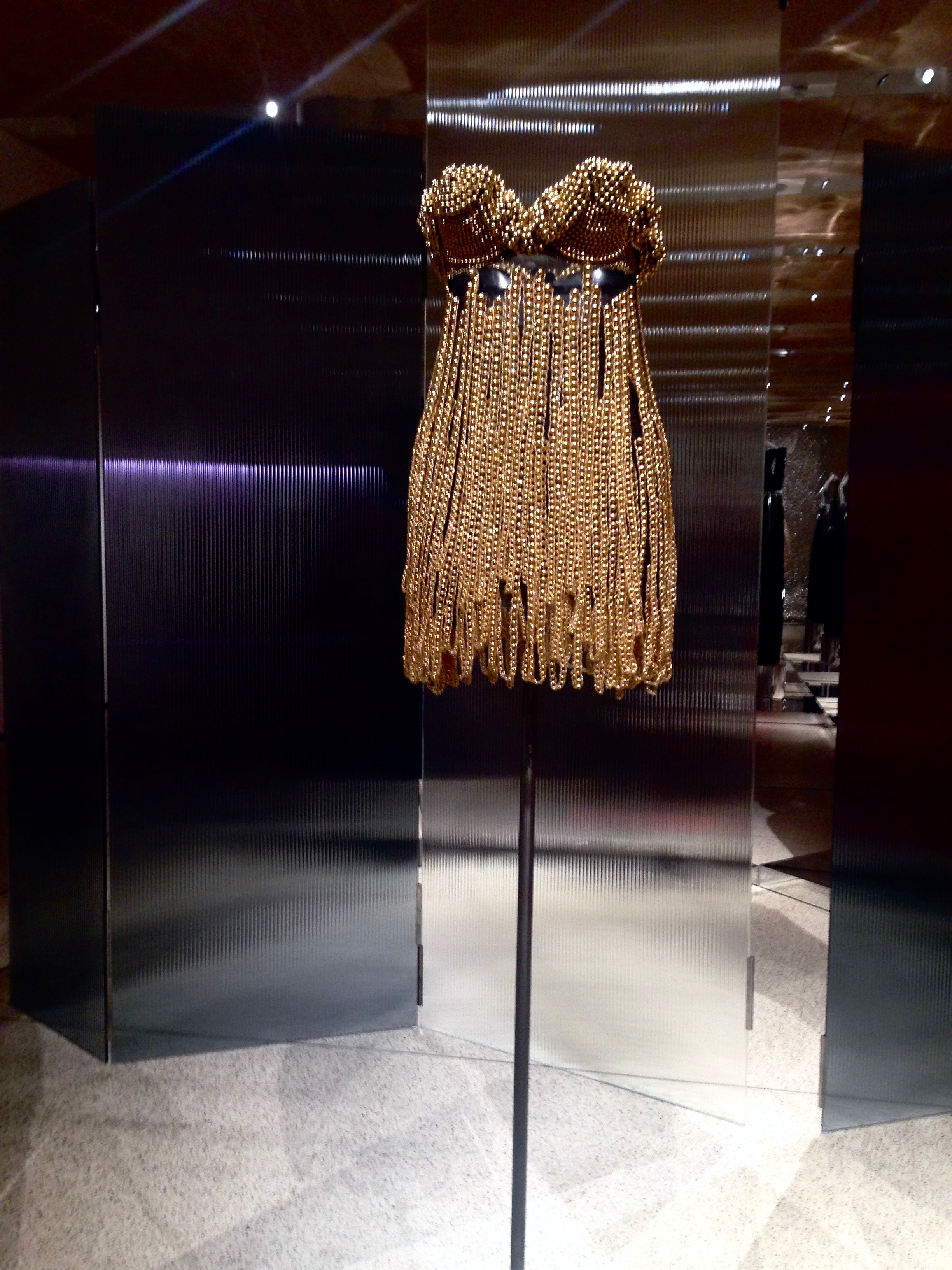
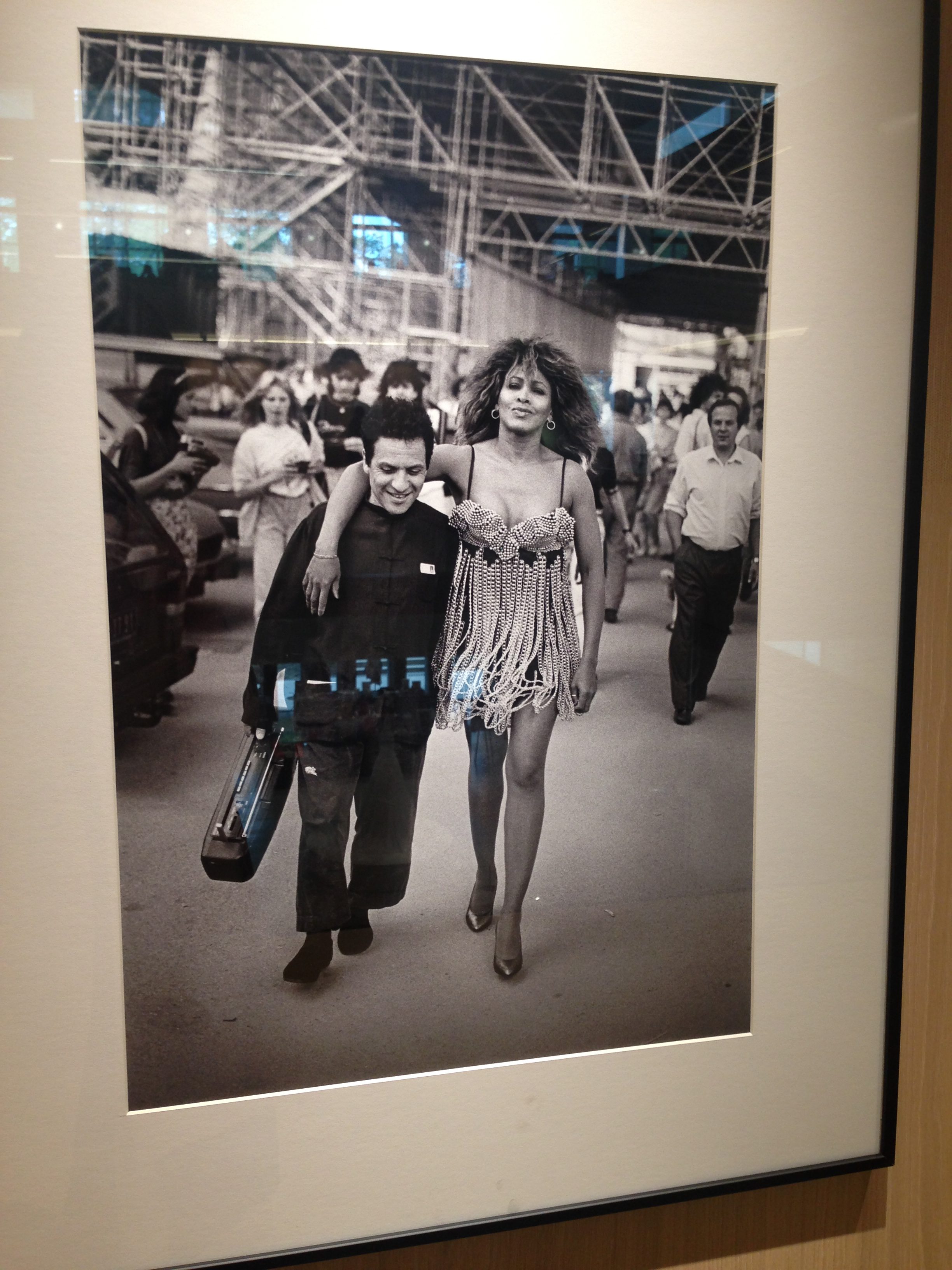
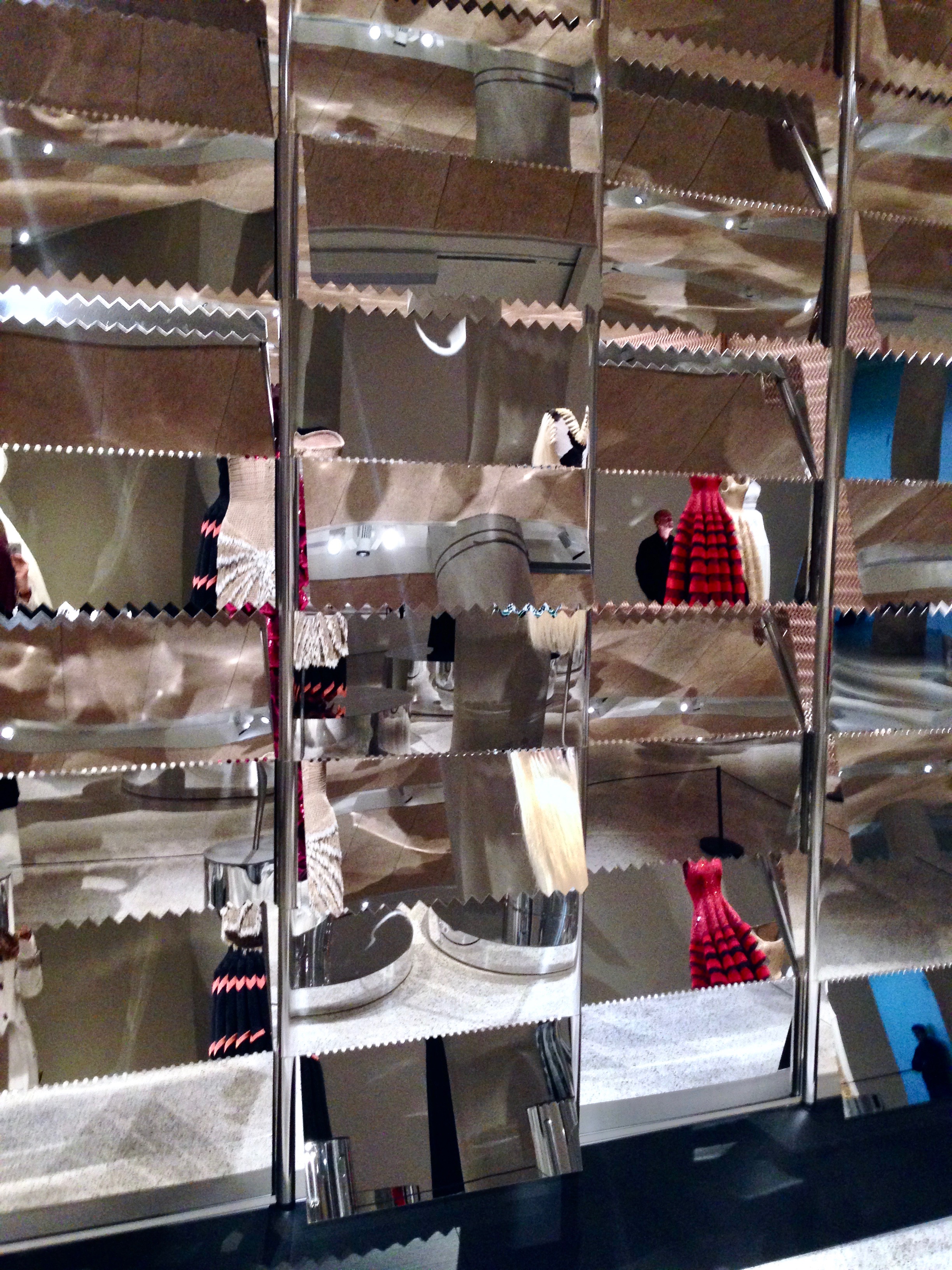
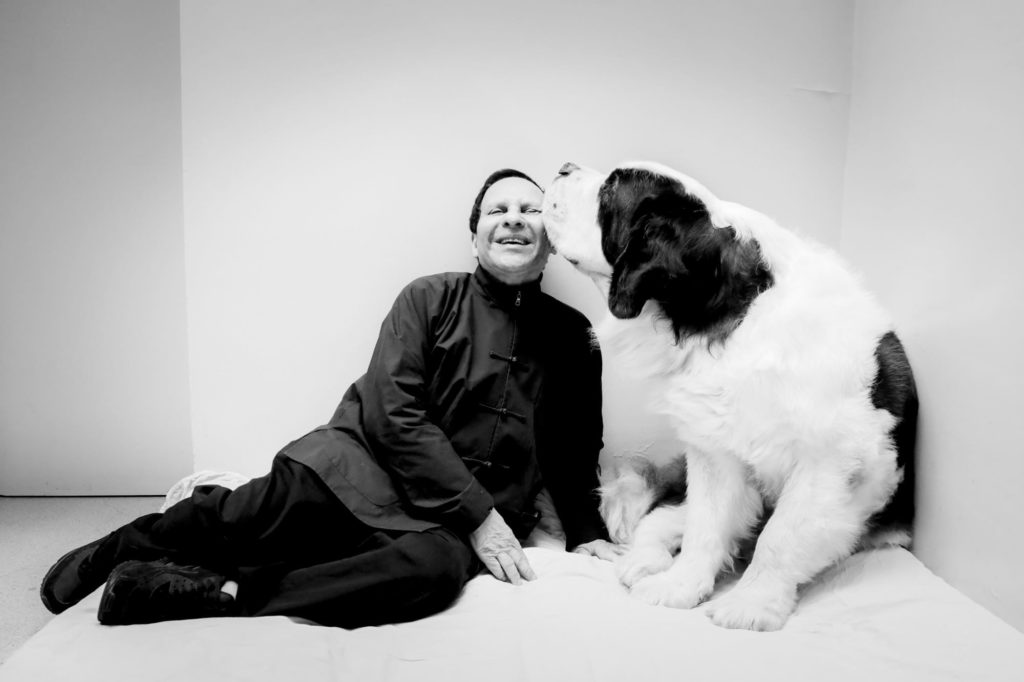
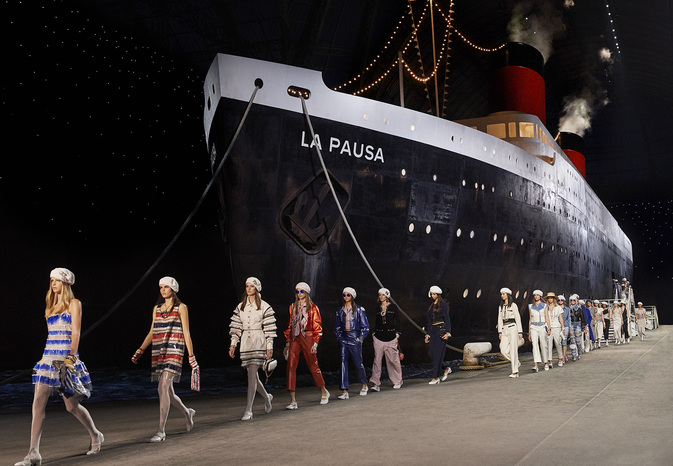

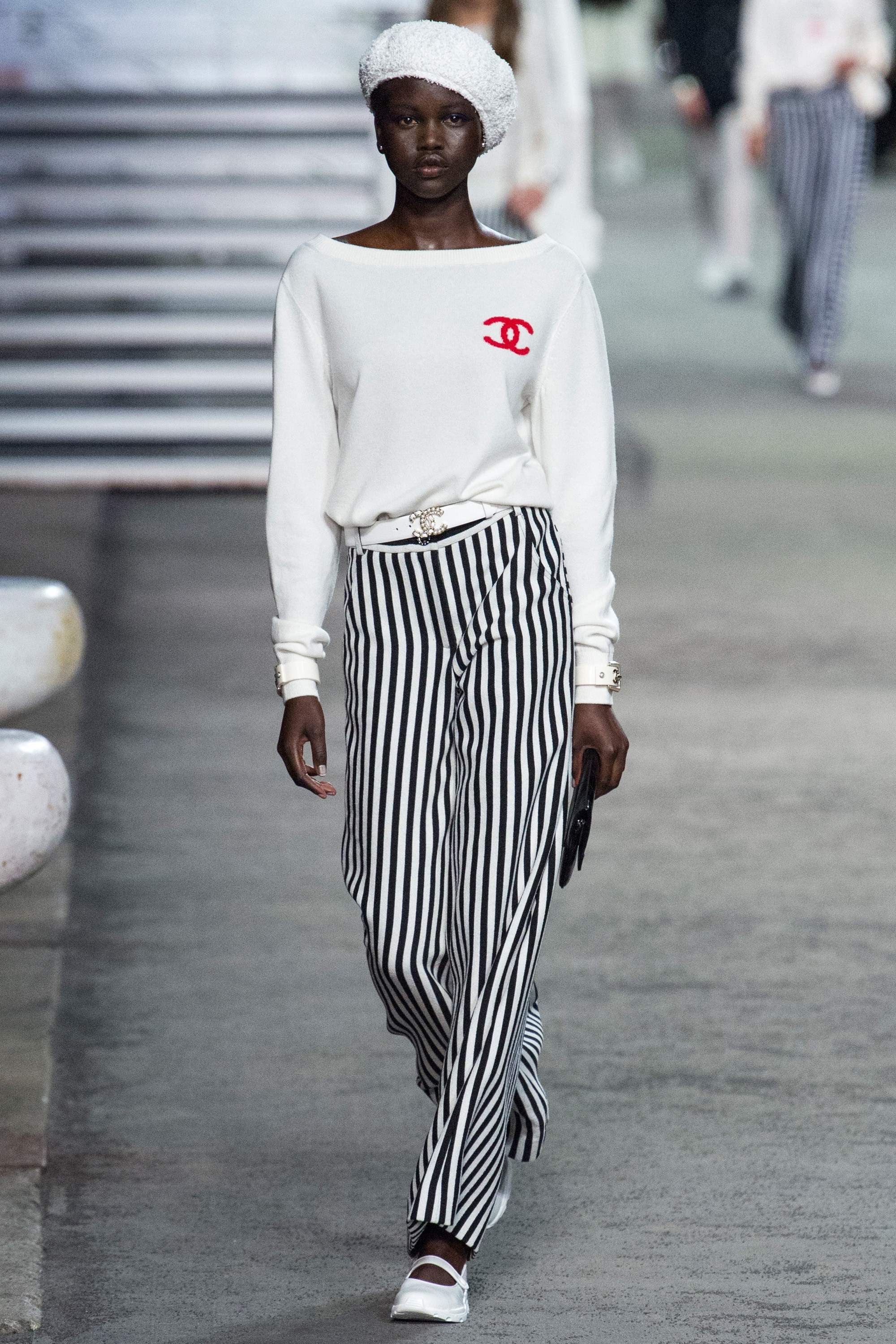


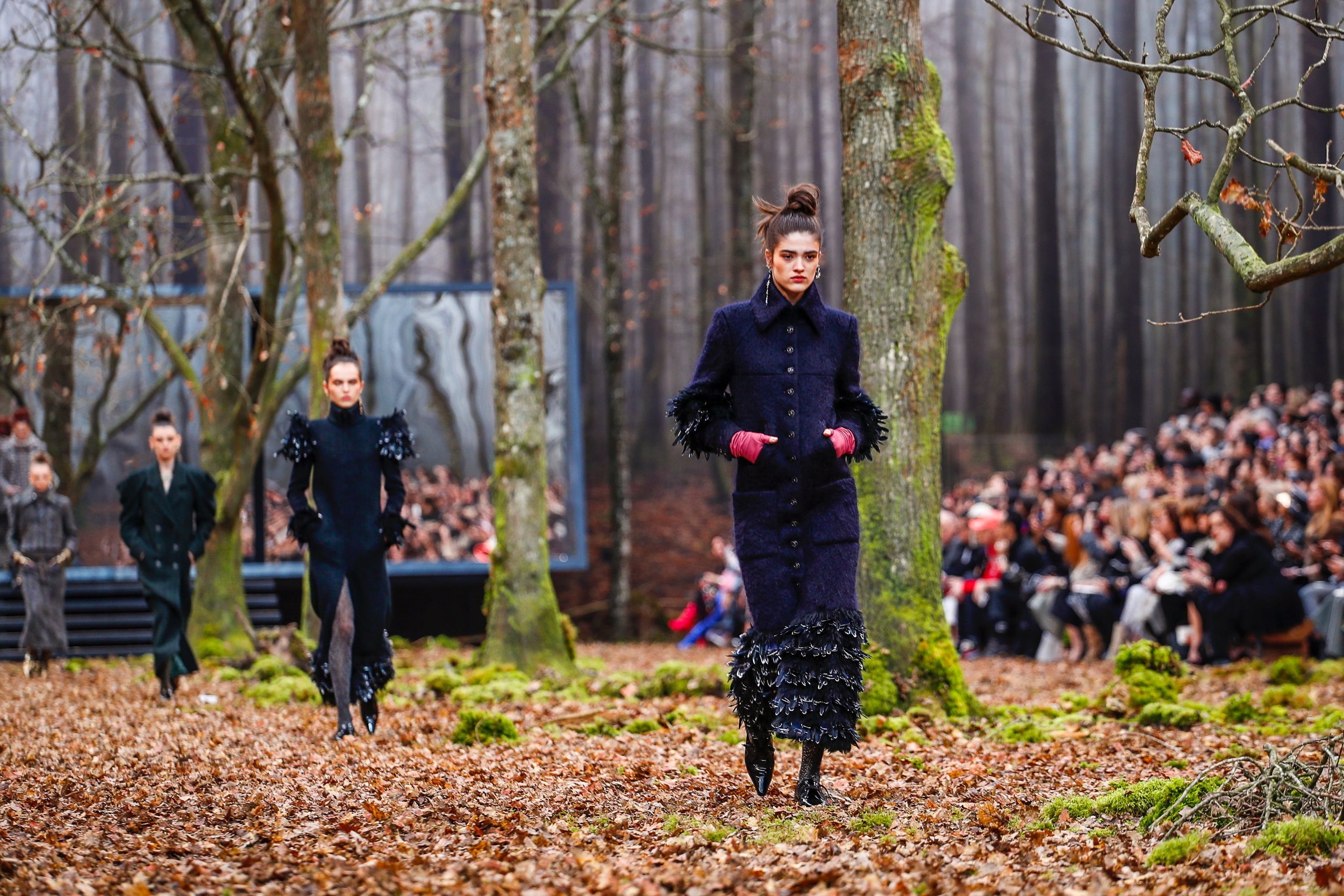 What are four weeks? In what strangely seemed to be a never ending marathon and equally the blink of an eye, we saw triumphs at the Winter Olympics in Pyeongchang, spectacular losses on the stock exchange, The Shape of Water win best picture at the Oscar’s, widespread protests in Italy, the brink of a head scratching trade war, yet another crushing school shooting in the US. And amongst it all? Hundreds upon hundreds of collections presented in four countries, with both green and seasoned creators offering their own visions for the autumn season.Does fashion “month” today seem so long because we have been re-wired for information immediacy all at a casual swipe? Is it the never-ending product pushing, which seems out of touch with our shift towards sustainability? Is it the fact that our jobs in fashion reporting never end thanks to an always online audience?Whatever it may be - the final stop on the fashion calendar makes all of the travel and the sleepless nights worth it. The magic of Paris remains and as expected, provided the greatest substance due to thought provoking, rich collections. Although most designers opted to play it “safe”, within such a turbulent climate sticking to tried and tested codes was a winning recipe.
What are four weeks? In what strangely seemed to be a never ending marathon and equally the blink of an eye, we saw triumphs at the Winter Olympics in Pyeongchang, spectacular losses on the stock exchange, The Shape of Water win best picture at the Oscar’s, widespread protests in Italy, the brink of a head scratching trade war, yet another crushing school shooting in the US. And amongst it all? Hundreds upon hundreds of collections presented in four countries, with both green and seasoned creators offering their own visions for the autumn season.Does fashion “month” today seem so long because we have been re-wired for information immediacy all at a casual swipe? Is it the never-ending product pushing, which seems out of touch with our shift towards sustainability? Is it the fact that our jobs in fashion reporting never end thanks to an always online audience?Whatever it may be - the final stop on the fashion calendar makes all of the travel and the sleepless nights worth it. The magic of Paris remains and as expected, provided the greatest substance due to thought provoking, rich collections. Although most designers opted to play it “safe”, within such a turbulent climate sticking to tried and tested codes was a winning recipe. The overarching aesthetic of the Paris collections drew from various interpretations of what it means to be a strong woman today. Less successful designers addressed the current movement of Me Too with predictable masculine symbolism while frontrunners approached female power with honest softness. The poetic romanticism of Pierpaolo Piccioli at Valentino was assertive - not aggressive- and proved that flowers and elegant layering too can sustain power.
The overarching aesthetic of the Paris collections drew from various interpretations of what it means to be a strong woman today. Less successful designers addressed the current movement of Me Too with predictable masculine symbolism while frontrunners approached female power with honest softness. The poetic romanticism of Pierpaolo Piccioli at Valentino was assertive - not aggressive- and proved that flowers and elegant layering too can sustain power.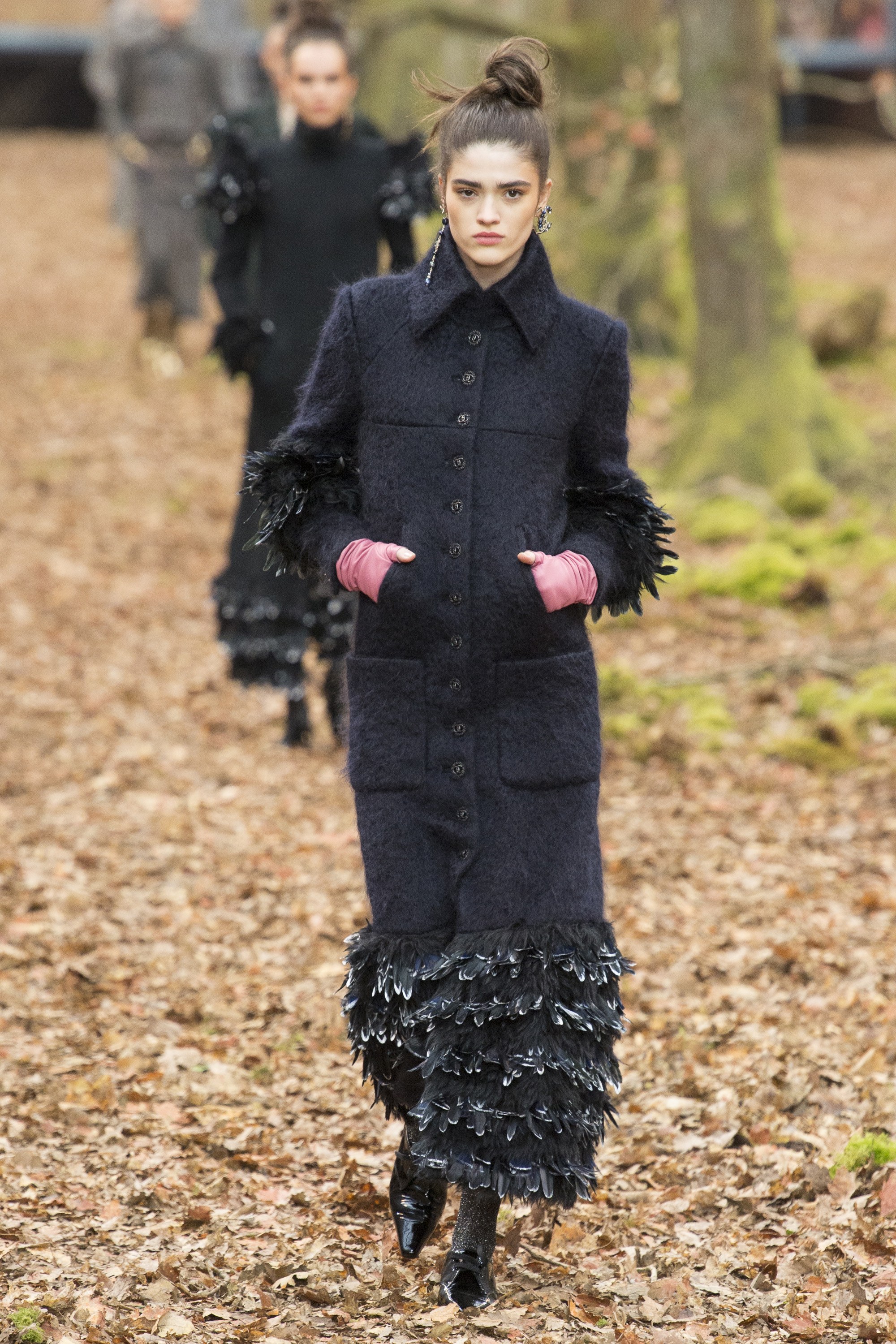 Another fine show of feminine strength was Chanel’s “Leave me alone” collection, set in the Grand Palais which was transformed into an autumnal park complete with live Oak trees. The fallen leaves crunched beneath the women who determinedly marched through the woods. Seemingly on their way to a destination, alone and unbothered, they dazzled in long Edwardian silhouettes painted in muted shades, save for intermittent punches of colour usually in form of leather evening gloves, which conjured up an image of 1980’s movie star glamour. Chanel - and other brands such as Loewe - also offered a practical hands-free solution in storing important tokens in form of fanny packs or clothing with deep pockets. (Today, one can’t be bogged down by heavy handbags!)While the focus on feminine strength played a critical role across all fashion weeks, what was so impressive with Paris was how this was exhibited through the design teams themselves.
Another fine show of feminine strength was Chanel’s “Leave me alone” collection, set in the Grand Palais which was transformed into an autumnal park complete with live Oak trees. The fallen leaves crunched beneath the women who determinedly marched through the woods. Seemingly on their way to a destination, alone and unbothered, they dazzled in long Edwardian silhouettes painted in muted shades, save for intermittent punches of colour usually in form of leather evening gloves, which conjured up an image of 1980’s movie star glamour. Chanel - and other brands such as Loewe - also offered a practical hands-free solution in storing important tokens in form of fanny packs or clothing with deep pockets. (Today, one can’t be bogged down by heavy handbags!)While the focus on feminine strength played a critical role across all fashion weeks, what was so impressive with Paris was how this was exhibited through the design teams themselves.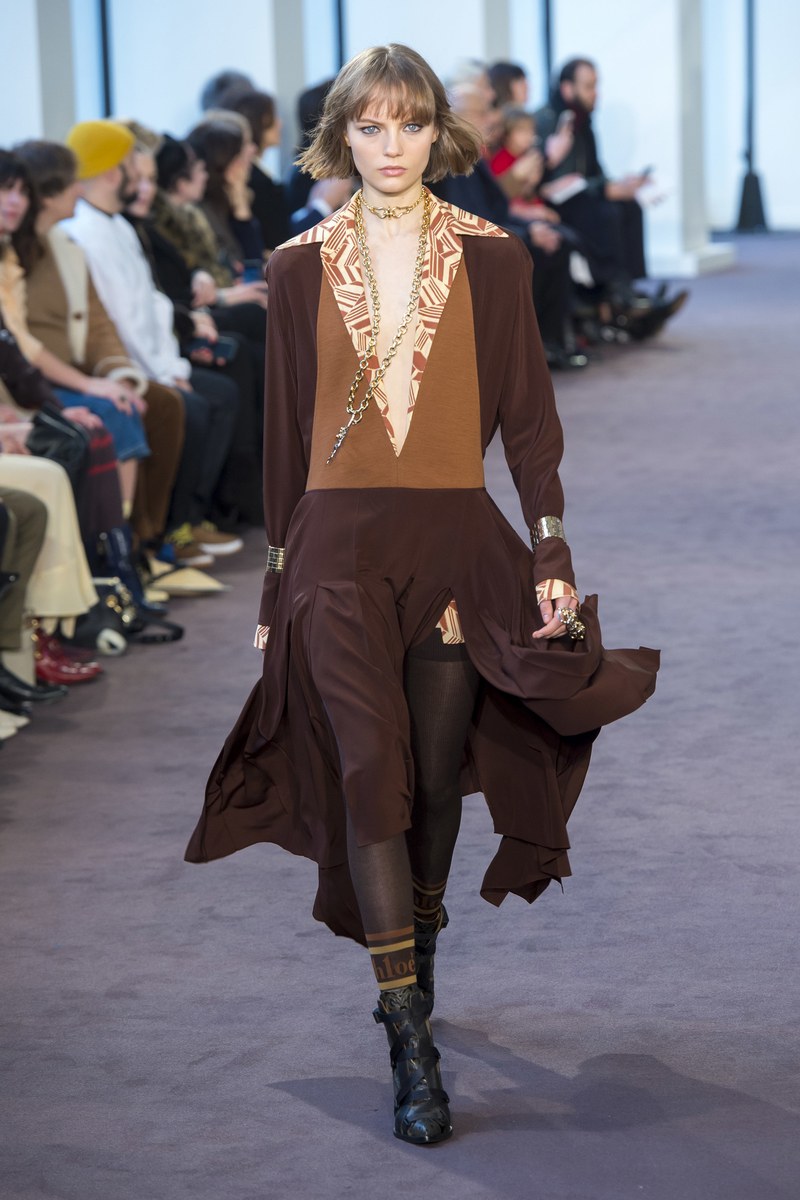 Natacha Ramsay-Levi continued to impress with her sophomore collection at Chloé, celebrating an effortlessly cool bourgeoisie look. There was Sarah Burton at McQueen who exhibited a “soft armour for women” with everything from female tuxedos to Oscar worthy gowns. Maria Grazia Chiuri, her strongest collection yet at Dior, paid homage to the 50th anniversary of the Paris student protests of 1968 through crafty patchworks and embroidery. Clare Waight Keller at Givenchy presented an outstanding collection, basing it on an examination of the Berlin club scene. Through an intelligent mix of modern “sleazy” furs (faux!), bold shoulders and cinched waists, she has successfully managed to stay true to Hubert de Givenchy’s legend and has built upon the tough, raw sexiness left by Riccardo Tisci.
Natacha Ramsay-Levi continued to impress with her sophomore collection at Chloé, celebrating an effortlessly cool bourgeoisie look. There was Sarah Burton at McQueen who exhibited a “soft armour for women” with everything from female tuxedos to Oscar worthy gowns. Maria Grazia Chiuri, her strongest collection yet at Dior, paid homage to the 50th anniversary of the Paris student protests of 1968 through crafty patchworks and embroidery. Clare Waight Keller at Givenchy presented an outstanding collection, basing it on an examination of the Berlin club scene. Through an intelligent mix of modern “sleazy” furs (faux!), bold shoulders and cinched waists, she has successfully managed to stay true to Hubert de Givenchy’s legend and has built upon the tough, raw sexiness left by Riccardo Tisci.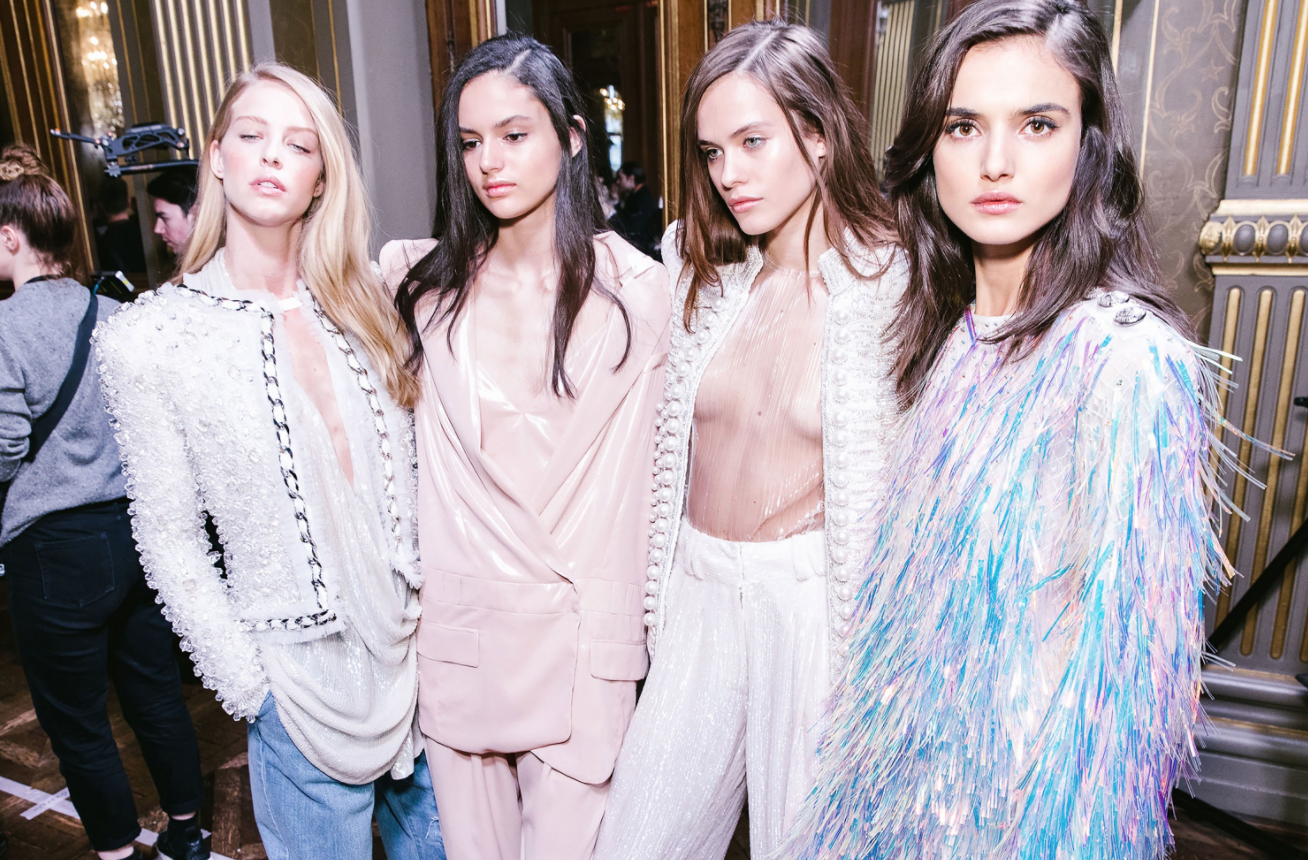 In terms of dominating trends, it is all about futuristic metallics, bursts of neon and an oversized silhouette. Time’s Up in staying silent and conforming - time to be seen! Heard! Respected! Most obvious in a futurist narrative was Olivier Rousteing at Balmain who envisioned a collection for 2050 which meant metallic-finishes, sequinned trenches, and black PVC which twinkled prismatic colour once in the light. Neon fringed boucle and holographic raffia-fringed dresses also reinforced this light-reflecting effect. As most of the fashion audience today seems to live stream fashion shows, Rousteing capitalised on the opportunity to announce his newly launched filter on Snapchat. Presenting a collection that would take advantage of this new filter only makes sense.Paris fashion week and by extension Milan, London and New York inspired a call for action. Most successful in making this point was no doubt Undercover - the show of the week - if not the season. Jun Takahashi presented an extraordinary collection best described as an exploration of the teenage American psyche as idealised by the Japanese outsider. 15 year old Sadie Sink, who played Max in Season 2 of Stranger Things, opened the show in a red tracksuit and glittery beanie and Nike sneaks. Following looks resonated with what real kids would wear today, making their way from homeroom to AP English - a selection of Varsity jackets, polo shirts, striped blazers, destroyed denim. Messages of Total Youth, Unbroken Innocence, Be Aggressive Passive…Aggressive were featured on the clothes.
In terms of dominating trends, it is all about futuristic metallics, bursts of neon and an oversized silhouette. Time’s Up in staying silent and conforming - time to be seen! Heard! Respected! Most obvious in a futurist narrative was Olivier Rousteing at Balmain who envisioned a collection for 2050 which meant metallic-finishes, sequinned trenches, and black PVC which twinkled prismatic colour once in the light. Neon fringed boucle and holographic raffia-fringed dresses also reinforced this light-reflecting effect. As most of the fashion audience today seems to live stream fashion shows, Rousteing capitalised on the opportunity to announce his newly launched filter on Snapchat. Presenting a collection that would take advantage of this new filter only makes sense.Paris fashion week and by extension Milan, London and New York inspired a call for action. Most successful in making this point was no doubt Undercover - the show of the week - if not the season. Jun Takahashi presented an extraordinary collection best described as an exploration of the teenage American psyche as idealised by the Japanese outsider. 15 year old Sadie Sink, who played Max in Season 2 of Stranger Things, opened the show in a red tracksuit and glittery beanie and Nike sneaks. Following looks resonated with what real kids would wear today, making their way from homeroom to AP English - a selection of Varsity jackets, polo shirts, striped blazers, destroyed denim. Messages of Total Youth, Unbroken Innocence, Be Aggressive Passive…Aggressive were featured on the clothes.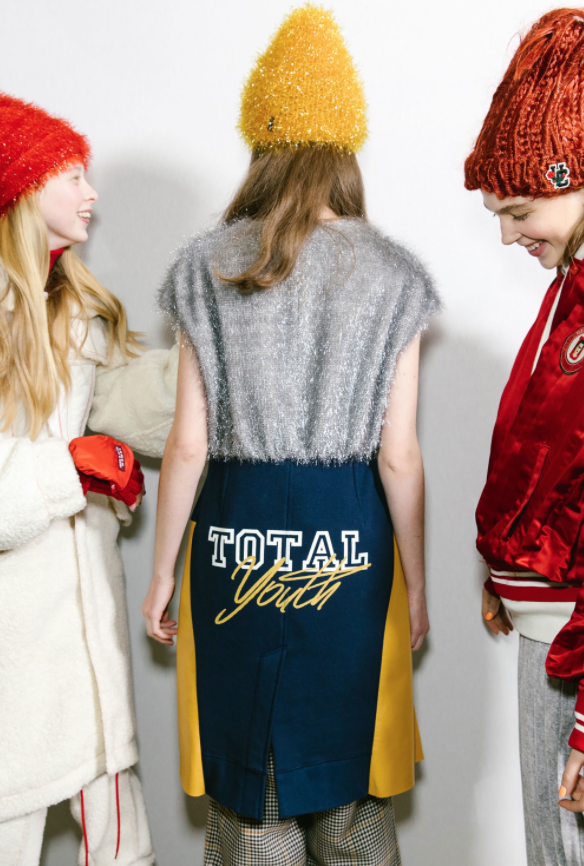 Of course Takahashi had planned his collection long before the school shooting at Marjory Stoneman Douglas High School. However, due to the timing, and how these young girls marched together to the sound of David Bowie’s “Heroes” all wearing a uniform of parkas and rain boots branded We Are Infinite, it was an incredibly emotional ode to this young generation who has come together collectively taking a stand against gun violence and their - no, our* futures.Remember, physical clothing is only a singular element in fashion - this season reminded us that in a sea of product, it is the intangible message which transcends and which counts at the end of the day.And at a very long month.
Of course Takahashi had planned his collection long before the school shooting at Marjory Stoneman Douglas High School. However, due to the timing, and how these young girls marched together to the sound of David Bowie’s “Heroes” all wearing a uniform of parkas and rain boots branded We Are Infinite, it was an incredibly emotional ode to this young generation who has come together collectively taking a stand against gun violence and their - no, our* futures.Remember, physical clothing is only a singular element in fashion - this season reminded us that in a sea of product, it is the intangible message which transcends and which counts at the end of the day.And at a very long month. 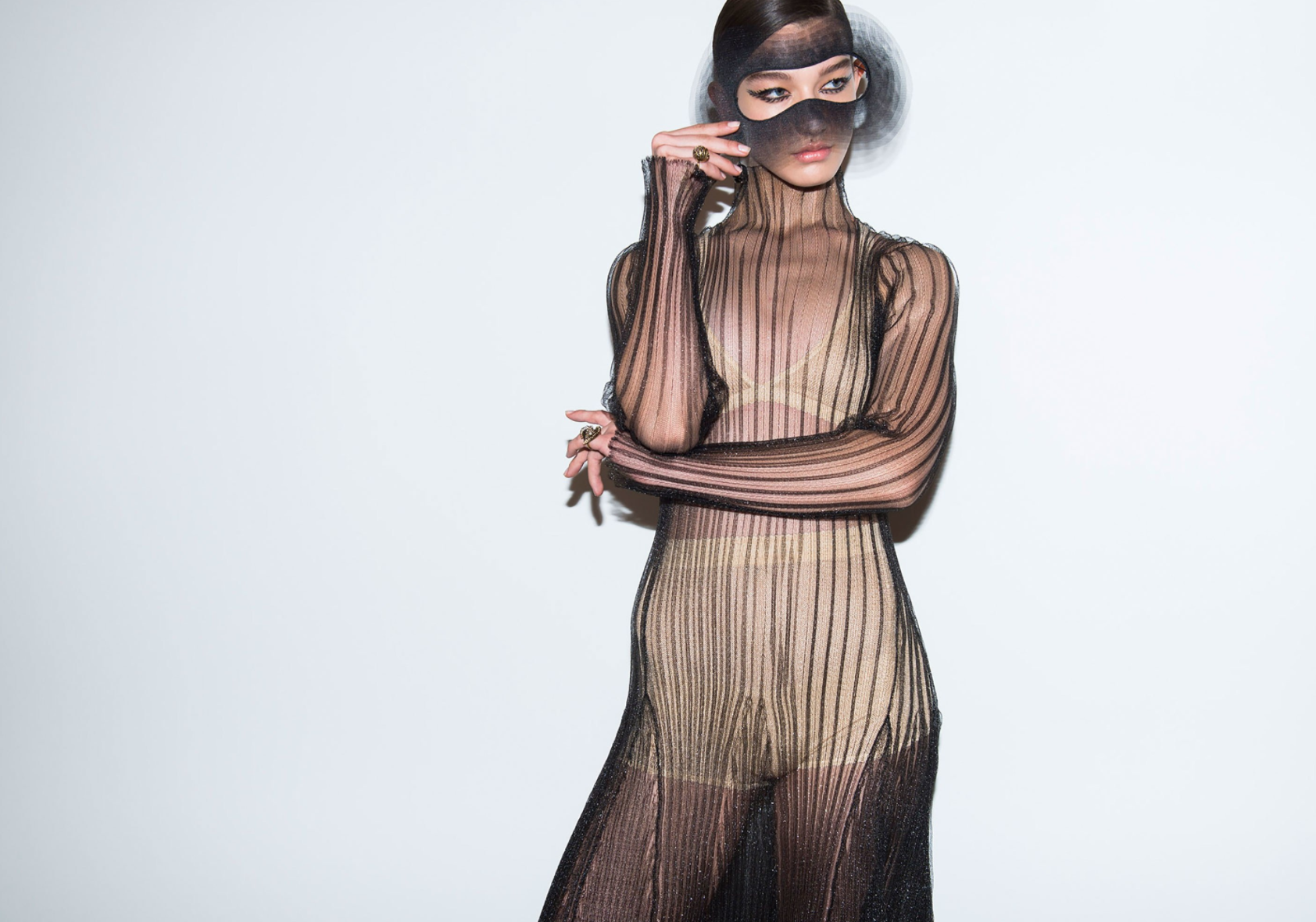

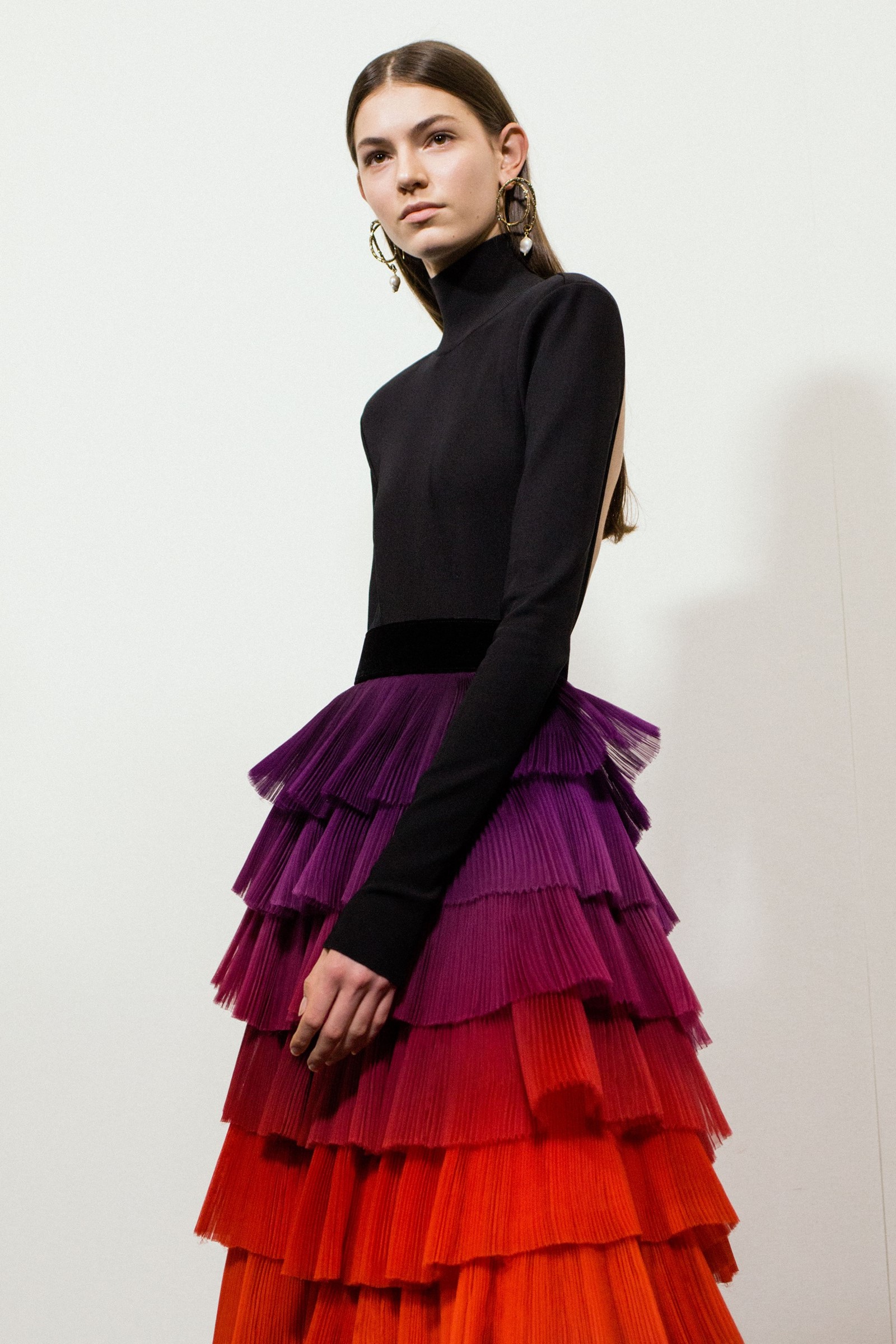
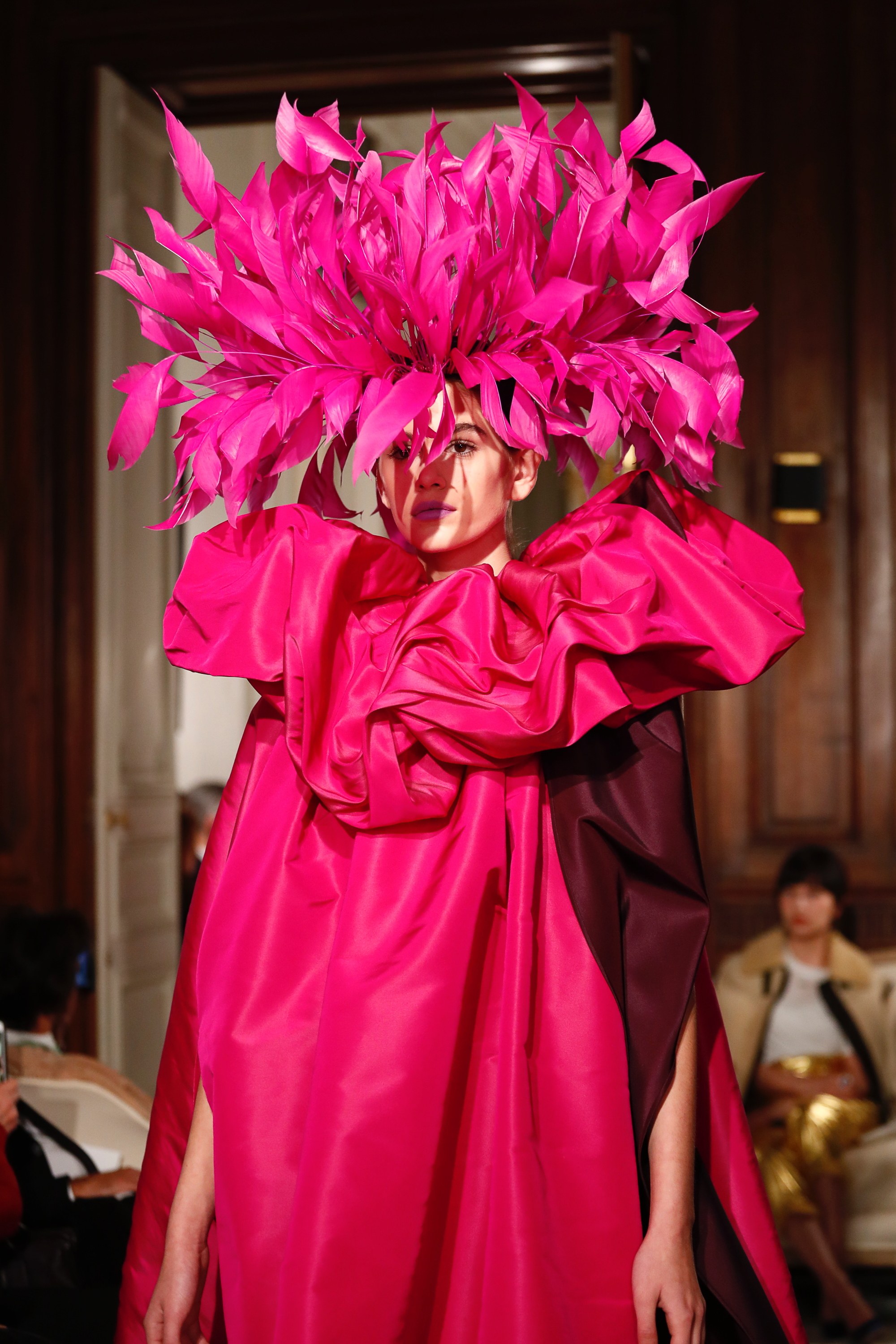
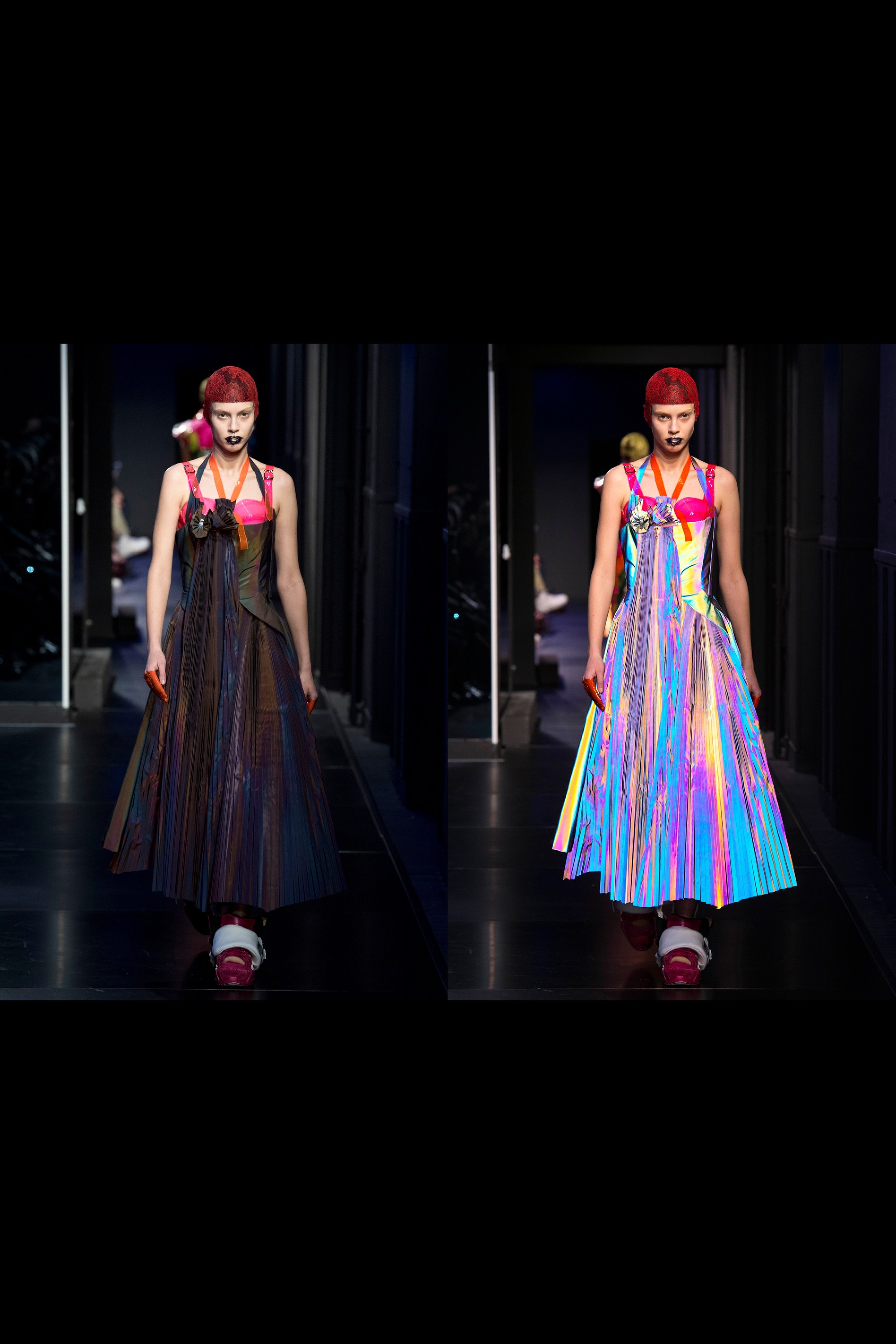
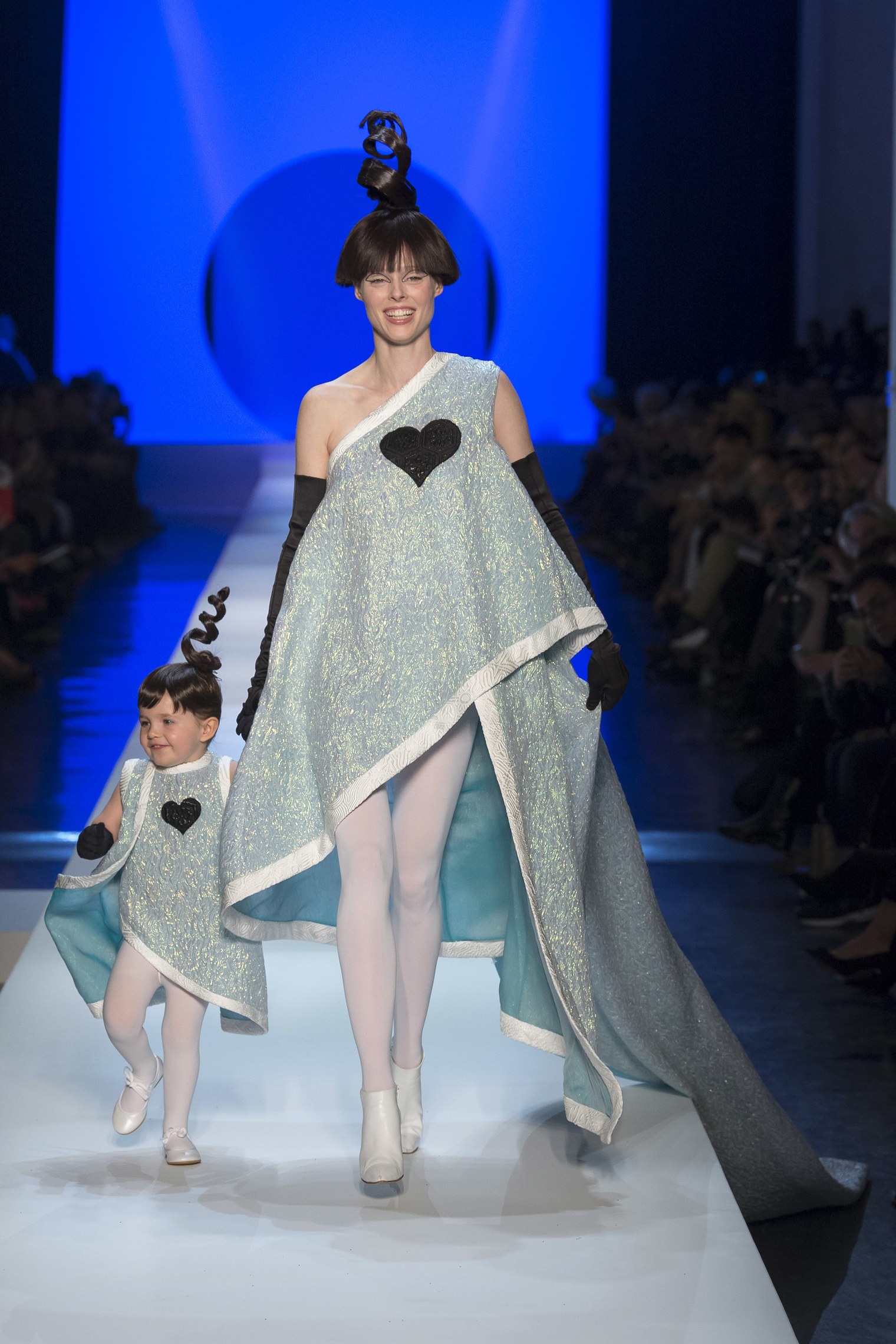
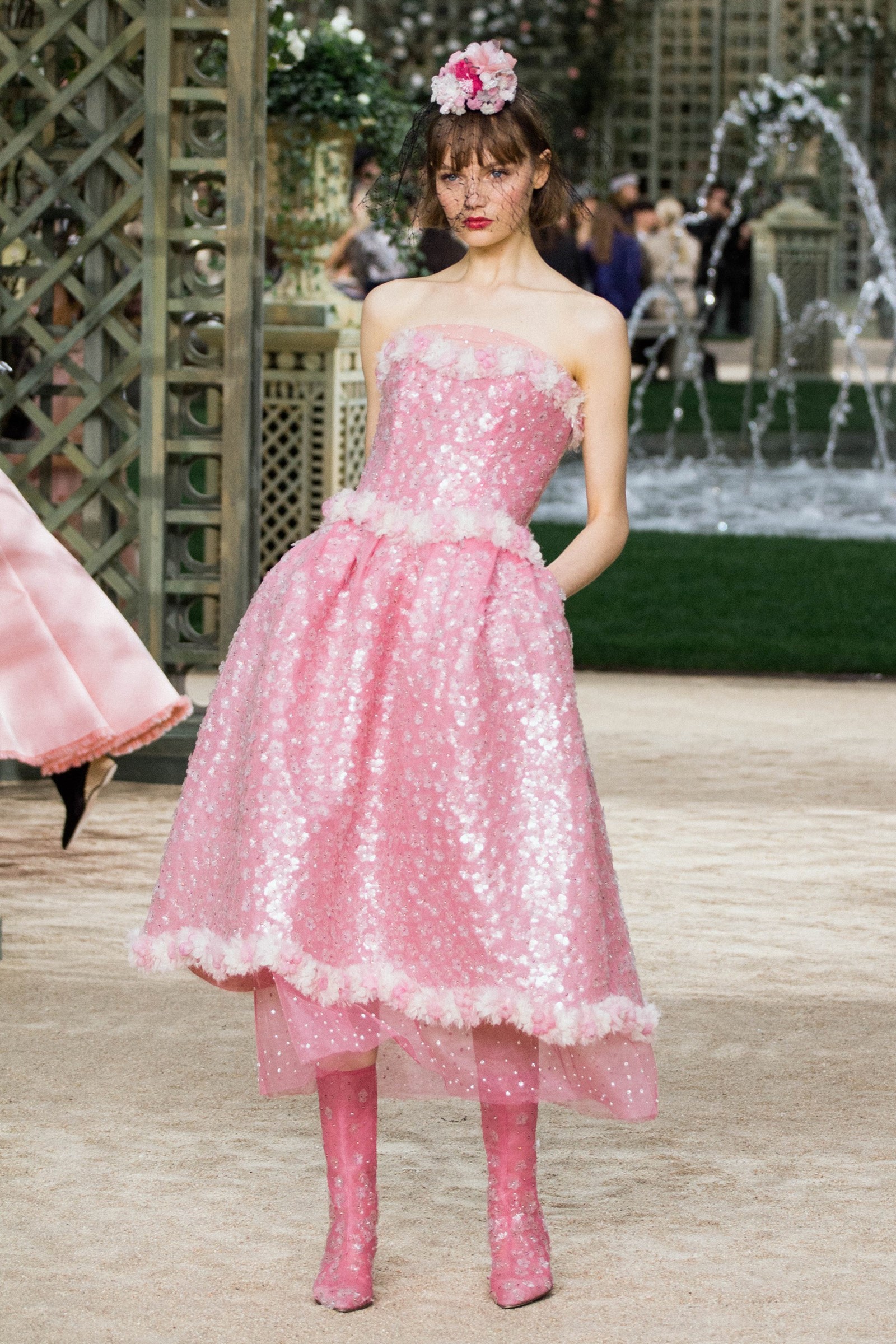
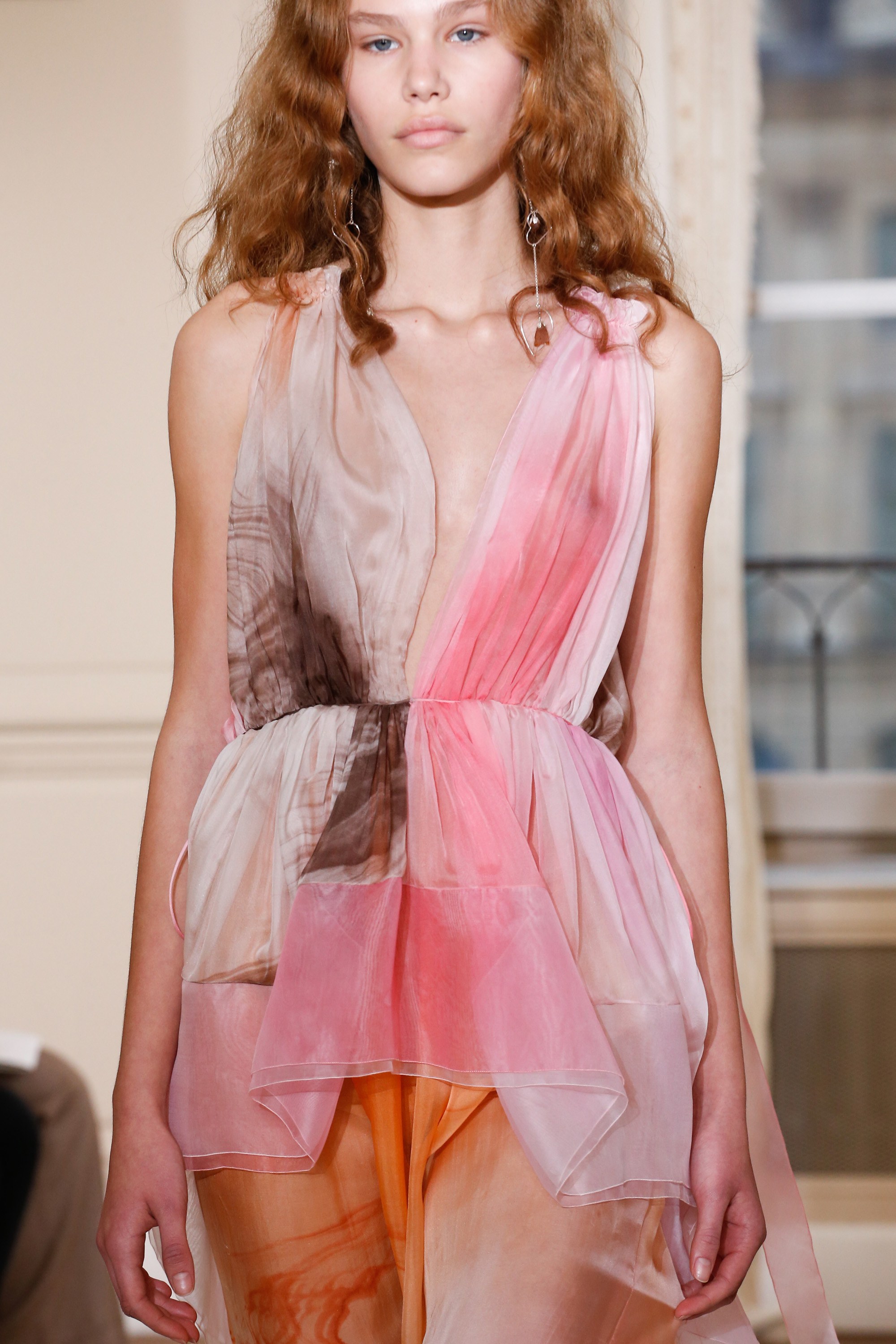 And opening the 2018 Spring Couture collections is but of course Schiaparelli. If it were true that a debutant can set the tone of the season, one can deduce a desire for nature, the organic, and in short- the real. Bertrand Guyon argues for a return for authenticity, not meaningless hype. Enough with the retina-burning screens and swipes in all directions. Guyon is bringing us back to the roots - in a way to humanity’s roots: back to Africa. In regards to the continent, the designer says he wasn’t referring to a particular culture but more a longing for a direct relationship to nature, clearly outlined in the vast choice of materials including raw linens, silks, straw raffia, and driftwood. The natural purity reflected throughout the collection provided a balance which was equally as raw as it was refined, a welcome contrast to a clichéd couture connotation for prim and proper. Another well-executed balance was the relationship between day and evening wear, where both sets complimented each other well. While the daywear was particularly strong, including the grey-blue Prince of Wales check dress, couture clients are sure to queue for the evening wear numbers which softly seduce the soul of the eye of the beholder and the (lucky) wearer. Even in the most organic of contexts, shocking pink is always a Schiaparelli prerequisite and here it was not bold as expected - it refreshed like a breath of crisp mountain air - a very bearable lightness of pink. An additional point which stood out for me was the promotion of model diversity - in race and age- on a couture runway - a big deal in terms of moving forward. This Out of Africa collection was a success and a strong start to the season.
And opening the 2018 Spring Couture collections is but of course Schiaparelli. If it were true that a debutant can set the tone of the season, one can deduce a desire for nature, the organic, and in short- the real. Bertrand Guyon argues for a return for authenticity, not meaningless hype. Enough with the retina-burning screens and swipes in all directions. Guyon is bringing us back to the roots - in a way to humanity’s roots: back to Africa. In regards to the continent, the designer says he wasn’t referring to a particular culture but more a longing for a direct relationship to nature, clearly outlined in the vast choice of materials including raw linens, silks, straw raffia, and driftwood. The natural purity reflected throughout the collection provided a balance which was equally as raw as it was refined, a welcome contrast to a clichéd couture connotation for prim and proper. Another well-executed balance was the relationship between day and evening wear, where both sets complimented each other well. While the daywear was particularly strong, including the grey-blue Prince of Wales check dress, couture clients are sure to queue for the evening wear numbers which softly seduce the soul of the eye of the beholder and the (lucky) wearer. Even in the most organic of contexts, shocking pink is always a Schiaparelli prerequisite and here it was not bold as expected - it refreshed like a breath of crisp mountain air - a very bearable lightness of pink. An additional point which stood out for me was the promotion of model diversity - in race and age- on a couture runway - a big deal in terms of moving forward. This Out of Africa collection was a success and a strong start to the season.
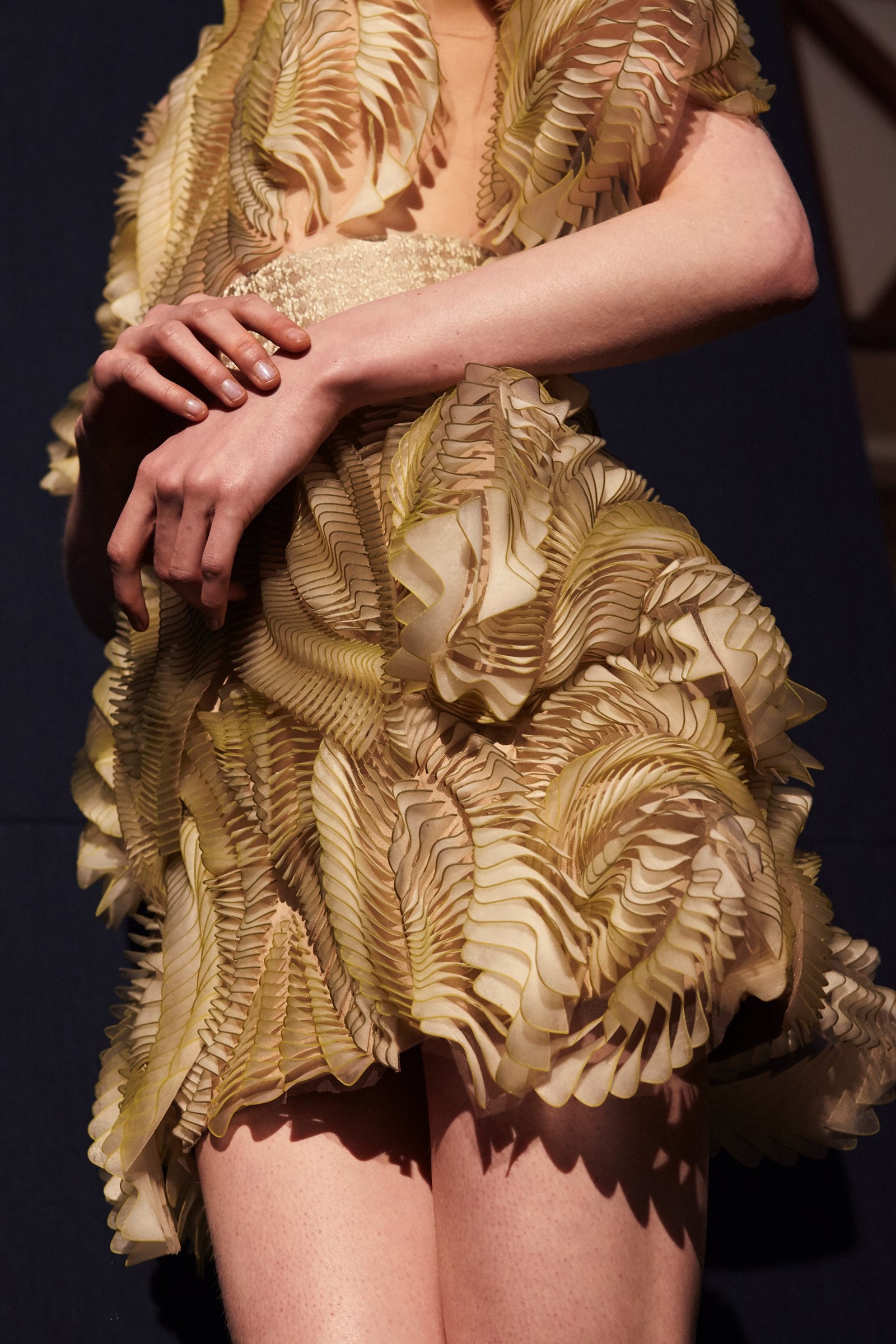
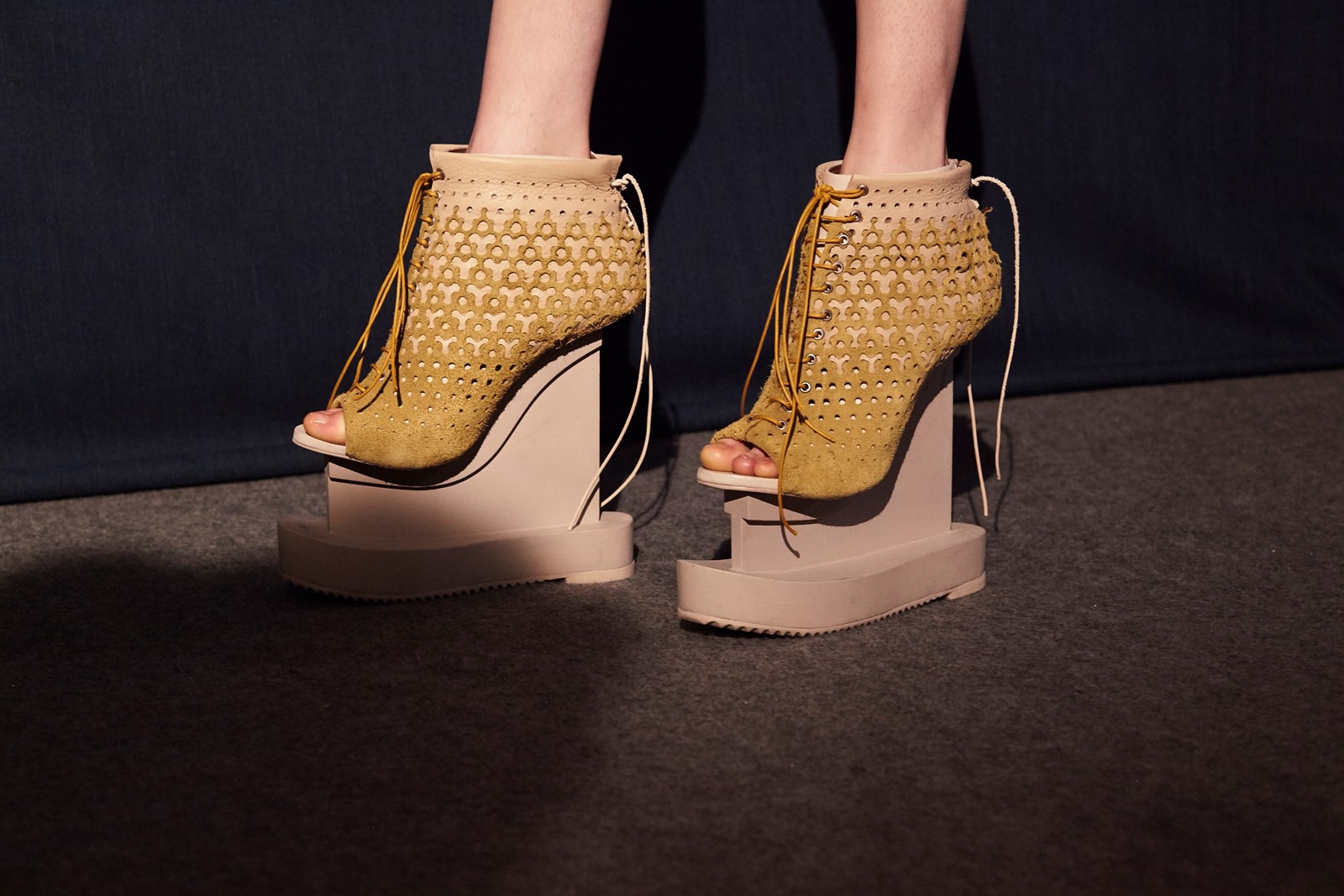 It was the friction between “the artificial and the organic” which made for an absorbing narrative at Iris Van Herpen. This season was based on “Ludi Naturae” or “Games of Nature” with models slinking down the runway looking like magnificent otherworldly creatures - thanks to the familiar futuristic materials resembling reptile scales. The outlandish creatures from deep within another galaxy were complete with the alien strut courtesy of sky-high geisha-esque platform sandals. Like Schiaparelli who embraced the organic, Van Herpen too kept to a natural palette of subtle browns, gold, and teal. However, it was what was above the models’ heads which set the tone of the show: large, paper-thin cellulose, floating sculptures by Dutch artist Peter Gentenaar. The shapes provided the context to the liberated silhouettes on the ground and made the clothes appear larger than life; collective pieces part of an entire art installation.
It was the friction between “the artificial and the organic” which made for an absorbing narrative at Iris Van Herpen. This season was based on “Ludi Naturae” or “Games of Nature” with models slinking down the runway looking like magnificent otherworldly creatures - thanks to the familiar futuristic materials resembling reptile scales. The outlandish creatures from deep within another galaxy were complete with the alien strut courtesy of sky-high geisha-esque platform sandals. Like Schiaparelli who embraced the organic, Van Herpen too kept to a natural palette of subtle browns, gold, and teal. However, it was what was above the models’ heads which set the tone of the show: large, paper-thin cellulose, floating sculptures by Dutch artist Peter Gentenaar. The shapes provided the context to the liberated silhouettes on the ground and made the clothes appear larger than life; collective pieces part of an entire art installation.
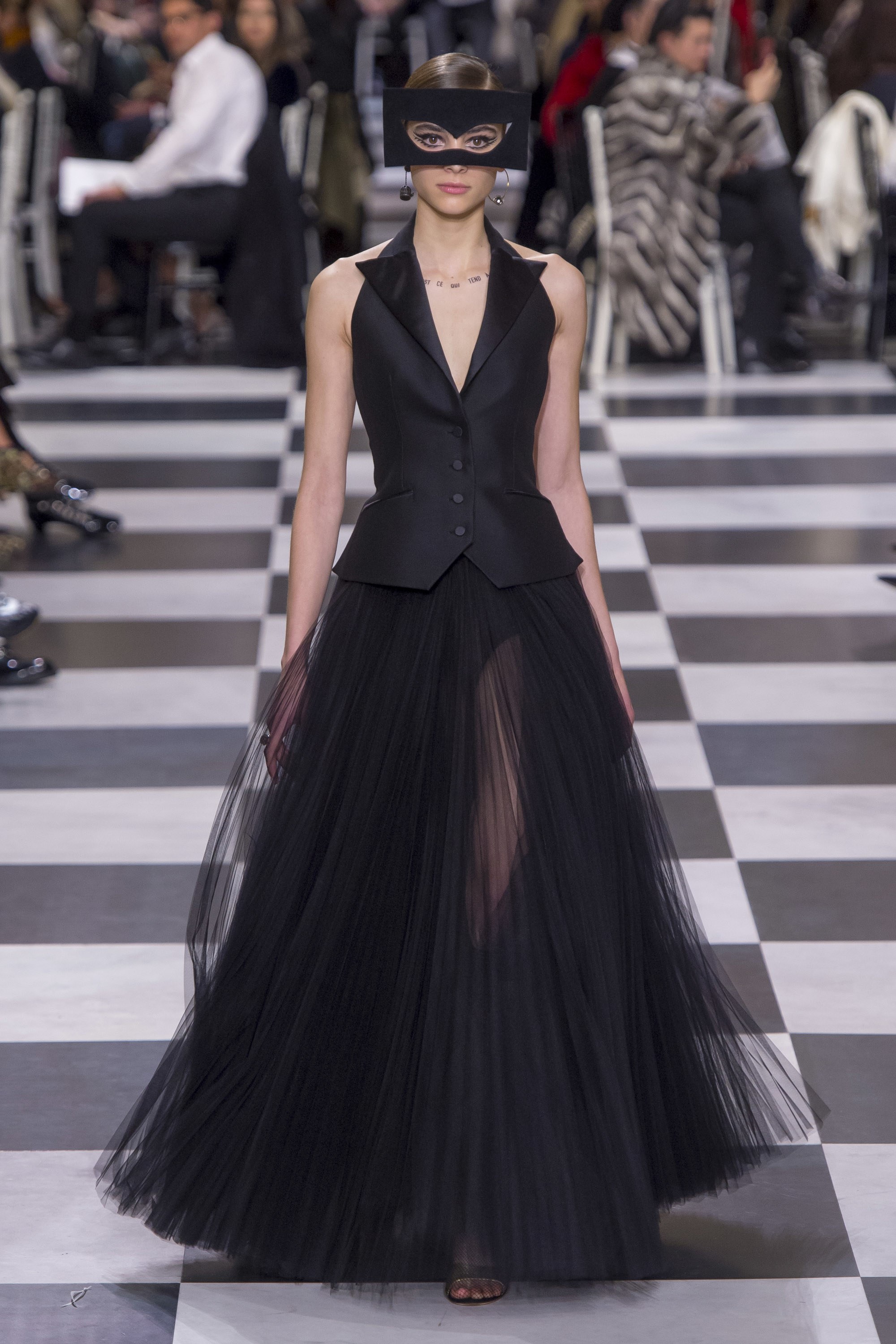 Today marks Maria Grazia Chiuri’s third couture collection for Christian Dior, and it was without a doubt, best to date and a reaffirmation that yes she is the right gal for the job. This was Chiuri’s first couture home run for the house and has proved that she can not only deliver clothes which are short-term sell-out sensations and trendsetters (the tulle strap dresses, the statement t-shirts, the newsboy navy caps…) but similar to her reign at Valentino together with Pierpaolo Piccioli, Chiuri can conjure iconic pieces; timeless craft yet capture the je ne sais quoi of the present. The collection took influence from surrealism (surrealist clothes for surrealist times no?) inspired by longtime Dior friend, Leonor Fini. Fini, the infamous Argentinian surrealist painter, designer, illustrator, and author known for her representations of powerful women. The brilliance of this collection was that the feminist spirit was not branded nor stifled- the symbolism and mastery were all in the detail. The entire collection would be worn by a confident, independent woman. A woman of intrigue, mystery, risk, and perhaps a little naughtiness underneath those delicious shadowy masks by Stephen Jones (very appropriate for tonight’s Dior Masked Ball). In sum, we saw a beautiful friction between the rigid masculine forms and the light femininity captured by tulle and organza, which played well onto a background of optical illusions. The experimentation in form and material paid off- Brava!
Today marks Maria Grazia Chiuri’s third couture collection for Christian Dior, and it was without a doubt, best to date and a reaffirmation that yes she is the right gal for the job. This was Chiuri’s first couture home run for the house and has proved that she can not only deliver clothes which are short-term sell-out sensations and trendsetters (the tulle strap dresses, the statement t-shirts, the newsboy navy caps…) but similar to her reign at Valentino together with Pierpaolo Piccioli, Chiuri can conjure iconic pieces; timeless craft yet capture the je ne sais quoi of the present. The collection took influence from surrealism (surrealist clothes for surrealist times no?) inspired by longtime Dior friend, Leonor Fini. Fini, the infamous Argentinian surrealist painter, designer, illustrator, and author known for her representations of powerful women. The brilliance of this collection was that the feminist spirit was not branded nor stifled- the symbolism and mastery were all in the detail. The entire collection would be worn by a confident, independent woman. A woman of intrigue, mystery, risk, and perhaps a little naughtiness underneath those delicious shadowy masks by Stephen Jones (very appropriate for tonight’s Dior Masked Ball). In sum, we saw a beautiful friction between the rigid masculine forms and the light femininity captured by tulle and organza, which played well onto a background of optical illusions. The experimentation in form and material paid off- Brava!

